#there is a small portion in one corner that may have to be excavated by snowplough
Explore tagged Tumblr posts
Text
Local man with chronic pain has just shovelled snow off of entire very large back deck solo. Whole thing was covered in 6 inches to a FOOT of snow. I love Canada. This all showed up literally overnight, by the way, the deck was completely snow-free before yesterday afternoon.
#there is a small portion in one corner that may have to be excavated by snowplough#because my body does not contain the sheer physical force necessary to move all that shit
2 notes
·
View notes
Text
The Depths
Part Eight of Take Your Time
Two Days | Masterlist | Guilt

Pairing: Oberyn Martell x Reader x Ellaria Sand Rating: M (this may go up—if it does, I will give everyone fair warning before there is any explicit content) Notes: I hope y’all had a good week! 🧡
Warnings: Cursing; angst; yearning
Summary: There are moments, small, infrequent moments, when a flicker of guilt passes between Oberyn and Ellaria.

The first day underwater is terrifying.
You’re queasy; you can’t keep anything but tea down. It’s not sea sickness, it’s nerves.
The boats are all in order, your team is set for the dive. Everyone is buzzing with excitement as they look over the plans that you’ve set out for them for the day. The first couple of days will be used for observation, planning, and photography. The water is cool; the visibility is better than anticipated. When you surface, you have fewer bubbles of fear, and more bubbles of nerves. A lot of the structures that you can identify as part of the Old Palace been very badly corroded; some have become artificial reefs for marine life, and you already know that you can’t disturb them, lest it harm the ecosystem that’s taken form. There were a few things glinting at the sea floor, a few materials that you believe are copper, but couldn’t get a good enough look at at the time—your tank had been low on oxygen, and the team in the boat had been urging you to surface for the last hour.
You tug your gear off, sucking in a breath of fresh air and raking a hand over your face. Your team is chattering around you, delighted, volleying species spotted, structures noticed. You cast your eyes back toward the water. The artificial reefs, what they were covering...Well, you’ll have to review the pictures, but you’re certain, based on what you’ve seen in drawings, that those were key components to the upper portions of the burial chambers. If you’re right, then there will be no touching them—the Dornish ecological society won’t allow it. “...Boss?” You turn your head back to your team. Someone’s said something to you and you’ve missed it. You push a smile onto your face. “Sorry guys, what’s up?” -- Oberyn and Ellaria see very little of their archaeologist in the week following. It’s not that they don’t try—they certainly do. They drop in on her classes, leave notes with invitations for dinner or drinks the desk in her office. They even take The Red Viper near the area of the dive once. They see her pulling on her gear just before she drops off of the boat and into the water. Oberyn watches her during one of her lectures. Where she’s had an ease, a joy to talking about these topics before, the archaeologist is now distracted and almost rigid in her teaching. He’s seen the papers, he knows that the early findings underwater haven’t been nearly as promising as she’d hoped. It’s beginning to wear on her, the threat of failure. And there are moments, small, infrequent moments, when a flicker of guilt passes between Oberyn and Ellaria. They know what else lays at Blackmont Cove—they know what she’s looking for, and they know that she won’t find it in the depths. But they’ve kept their anonymity for so long—they’ve managed to stay afloat by being careful. Doran and the Sand Snakes went out of their way to destroy so many depictions of them, save for the ones that remain in Blackmont Cove. If they’re found...Well, it’s not worth thinking about what may happen.
They get the notes that they leave for her back—slipped under their doors or pinned to the bulletin boards outside of their offices. They bear responses like Sorry, the dig is too busy, or, Some other time. This happens for weeks. They can’t even catch the archaeologist after her classes—she steams out of there, and they know she’s headed for the dive. Ellaria inspects the latest note that she left for the archaeologist—another invitation to the open-air market. This one just has a hurried scribble that reads Can’t. She glances up as Oberyn comes into the office, sees the slight calculation and subsequent concern in his expression. “You look troubled, my love,” He says. Ellaria holds the note out for him, and he takes it, looking over the response. She sees his brow furrow just a touch. “A disappointment, but not a surprise,” He passes the note back to her. “I suppose,” She concedes, looking down at the note again. Oberyn rests his hands on Ellaria’s hips as he considers her expression. “...What is it?” He presses. She takes in a deep breath, her eyes flitting around the office. “It’s just...Quite rare that we meet someone that understands so much about...The lives that we knew. It was refreshing.” Oberyn hums, urging her on, and Ellaria meets his gaze, “I let myself get my hopes up, and now it feels...Foolish.” Oberyn smooths his thumbs in soft circles along her sides. “It’s not foolish to want someone, or to appreciate their prowess.” “Yes. You spent many hours appreciating her prowess.” Oberyn chuckles, raising his hand and cupping Ellaria’s cheek, “Be serious a moment.” Her mirth drops away as quickly as it arose, and she lowers her eyes to his chest. “Well,” She says, “Whatever happens, I enjoyed our time together.” Oberyn nods, tipping his head up and brushing a kiss to her forehead, then her lips. “Giving up so easily? Now who is being timid?” He teases. “There is a difference between being timid and taking the proper caution. I attended her class this morning—I’ve never seen anyone so tired.”
-- The Dornish Ecological society is staunch in their insistence that you leave the artificial reefs alone, as you knew that they would. You’re on the phone with them when you hear a knock on your office door. You glance up and spot Oberyn there. Something in your gut clenches—something nervous and twisty. You hold your hand up and point to the phone.
Oberyn nods.
And you figure he’ll leave, but instead he steps further inside and shuts the door behind himself. You narrow your eyes a little bit, lowering your eyes back to the files in front of you and refocusing on the conversation.
“Right…” You answer into the phone, “No, I understand that that species has become a vital part of the Harbor—...I understand, I’m not proposing that we—” It hurts you to press on, “I’m no longer proposing that we raise and restore those structures.”
Out of the corner of your eye, you can see Oberyn still in his looking at your shelves; you see him tip his head back toward you, clearly listening in on your conversation. You clear your throat before you go on:
“But I would like to get a better look at a few of the objects along the sea floor in the area. I think they may’ve been uncovered by the most recent tide…Yes, I had a hydrographic survey done. The area I’m proposing to excavate along the floor is minimal in regards to the entire site, but I'd like to retrieve them before the next tide…I could run the survey down to you now...Yes. Thank you,” You hurry to hang up before you bend over your desk, hurriedly gathering your materials. You glance up as you feel Oberyn turn to face you fully.
“Is there something I could help you with? I’m sort of in a hurry.”
“I can see that,” Oberyn nods, “...The structure you won’t be raising, is that—”
“Yes,” Your answer is hurried and clipped. It’s not your ego that tells you that Oberyn has been keeping up with the dig—it’s how well you’ve come to know him, his fascination and love of Dorne’s history. That brings back that twisting feeling, and take in a deep breath, trying to rid yourself of it You stack the folders and files that you need and grab your bag, shifting it onto your shoulder.
“I gotta go,” You skim around the desk, “So—Sorry that you’ve wasted your time coming over here—”
“It wasn’t a waste—”
“Feel free to stay and to—to browse whatever books you like—”
Oheryn catches hold of your hand, stilling you, and you turn to look up at him, brow furrowed. He’s watching you with something that you can’t quite place—it seems too near concern, too close to something warmer, and you don’t want to read too far into that. “Take a moment for yourself,” He urges you, “Not now, but...Slow down, sweet—when you have time.” Maybe he doesn’t mean for the advice to irritate you; maybe it’s not just the urging, maybe it’s the softness of his expression—maybe you feel that the man has no right to look at you softly, with a concern that should be pointed at someone like Ellaria. You shake his grip off and reel away, slipping out of your office and into the hall. It isn’t fair—what does a man like Oberyn Martell know about time?
Tag list: @massivecolorspygiant ; @mylittlelonelyappreciationtoo ; @recklessworry ; @paintballkid711 ; @peoniarose ; @fantasticcopeaglepasta ; @missredherring ; @writeforfandoms ; @grogusmum ; @phoenixhalliwell ; @donnaa ; @natandtasha ; @quietpainter ; @acrossthestars ; @elen-aranel ; @letsfly-andbe-free ; @wonderlandgabby ; @amneris21 ; @you-didnt-see-that-cuming ; @blueeyesatnight ; @ayamenimthiriel ; @librariantothejedi ; @revolution-starter ; @softdindjxrin ; @whovianayesha ; @youngkenobilove ; @emotionalsupportdaydreams
#oberyn martell x reader#oberyn martell x reader x ellaria sand#oberyn martell/reader/ellaria sand#oberyn martell x you#oberyn martell x you x ellaria sand#Oberyn Martell/You#Oberyn Martell/You/Ellaria Sand#Ellaria Sand x Reader#Ellaria Sand x You#Ellaria Sand/Reader#Ellaria Sand/You#Take Your Time#The Depths
118 notes
·
View notes
Photo

Stela of Ramesses II, ca. 1279-1213 B.C.E., Brooklyn Museum: Egyptian, Classical, Ancient Near Eastern Art
Large sandstone stela of Ramesses II, in sunk relief. Upper part shows Ramesses II standing on the right receiving the insignia of kingship from Amun, behind him stands Mut, five rows of hieroglyphs below. The figures are executed in good XIXth dynasty style and the stela is a good example of conventional work of the period. Above the figures are six columns of hieroglyphs, and there is one column between the king and Amun. According to Fairman, "The text gives the titulary of the king and contains a reference to what may be the official name of the town - 'the house of Ramesses - Meriamen'. The ordinary name of the town not recorded on this stela may have been Khenemwaset, 'she-who-unites-with-Thebes'. At the base of the stela are two cartouches surmounted with disks and flanked on each side with a pair of Rhkyet birds. Condition: When excavated, the stela was found face down, broken into four parts, but complete. Surface slightly weathered, but in general condition excellent. Faint traces of paint on the bodies and details of upper portion. At the lower left corner is a small depression, but probably ancient. Size: 66 5/16 x 34 5/16 x 7 5/16 in. (168.5 x 87.2 x 18.5 cm) Medium: Sandstone
https://www.brooklynmuseum.org/opencollection/objects/3449
6 notes
·
View notes
Text
A Journey to France to Uncover the Mysteries of the Carnegie’s Grand Staircase
The Carnegie Institute has been in existence for 125 years and is one of the greatest architectural buildings ever designed in Pittsburgh. In 1985, Carnegie Institute President Robert Wilburn invited Dr. Cynthia R. Field, the Smithsonian’s Architecture Historian, to assess the artistic value of the museum. He asked, “what do you think is the most valuable specimen or painting in the museum?” She said, “The Building Itself is the Greatest Object of the entire Museum Collection” (Fig. 1).

Fig. 1: Carnegie plaque
The internationally-famous architect, I.M. Pei, who designed the Louvre’s glass pyramid that sits in the Louvre’s central courtyard in Paris, France, opined, “Architecture is the very mirror of life. You only have to cast your eyes on buildings to feel the presence of the past, the spirit of a place; they are the reflection of society.” In 2018, Architecture Digest ranked the Carnegie’s Grand Staircase the 8th best museum staircase in the world. The Grand Staircase was built by the Pittsburgh architectural firm of Alden and Harlow at the apex of America’s Gilded-Age building boom. During my research, I discovered that the architects employed multicolored classic marbles and fossil limestones in the interior design from Algeria, Croatia, Greece, France, Ireland, Italy, and the United States. The commission to build the Grand Staircase in 1907 incorporated two classical French fossil limestones in the columns and pillars, floor tiles, steps, walls, balconies, and water fountains. This monumental Beaux-Arts style staircase is modeled after the L‘Opéra Garnier ‛a Paris, Grand Staircase in France, c. 1875, and was visited by a French Delegation with Andrew Carnegie (Fig. 2). The architecture described as Beaux-Arts was taught at the École des Beaux-Arts in Paris, from the mid-19th century until 1900. It drew upon the principles of French neoclassicism and used modern building materials, i.e., iron and glass. And as such, it became a preferred architectural style in the United States from 1895 until 1910 in cities such as, Boston, Chicago, New York City, Pittsburgh, and Washington D.C.

Fig. 2: French delegation and Andrew Carnegie
In 2019, The Carnegie’s Grand Staircase and Music Hall Foyer were recognized in the book La pierre de l’Échaillon Une histoire locale, une renommée international for the use of Échaillon jaune (yellow) ornamental stone in the museum’s columns, pillars, and walls (Fig. 3). This book was published by S.P.I.A. (Sauvegarde du Partrimoine Industriel d’Autrefois, a historical society founded by Jean Paul Rey, president) (Fig. 4). In the book, they describe how a small French village of l’Échaillon, pronounced Esh-ee-own, received recognition for its white marble (a limestone) used by famous French architects in 64 classic buildings and sculptures from 1875 to the early 20th century (Fig. 5). I first met Jean Paul in October of 2016, when I was invited to give a presentation at an S.P.I.A. meeting on my research on the Carnegie’s l’Échaillon. The meeting was held in an old schoolhouse in the village of Saint-Quentin-sur-Isère, Département de Isère, in southeast France.
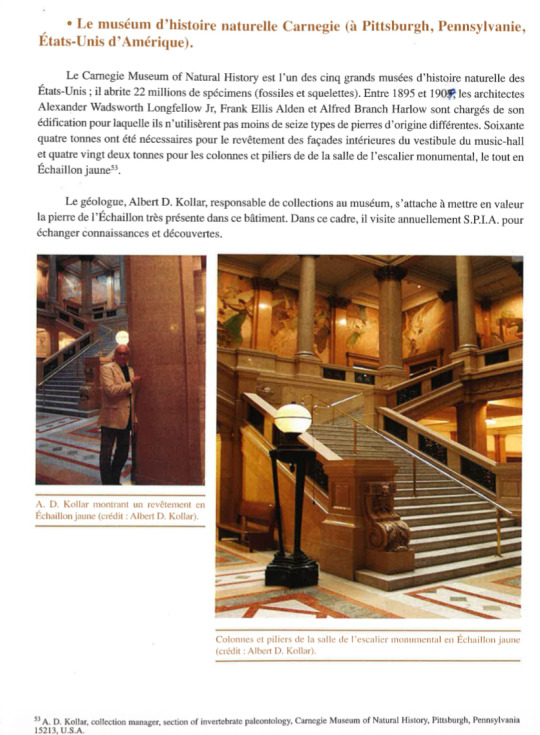
Fig. 3: The Grand Staircase

Fig. 4: Jean Paul Rey and Albert D. Kollar

Fig. 5: Book cover
The French Limestones in the Carnegie’s Architecture
The Carnegie building stones research project progressed significantly, once we obtained the digital images of the architect’s blueprints from the Carnegie Museum of Art’s Architecture Department. With the assistance of my co-authors, Rich Fedosick and Kay Hughes of the Section of Invertebrate Paleontology, we examined the blueprints to understand the architects Marble Index terminology (Fig. 6). Eventually, we were able to interpret and recognize the location of the two French limestones based on the Marble Index letters, E for Échaillon and H for Hauteville. From a nonscientific perspective, the architects considered the Carnegie’s interior stones to be marbles. However, the geological definition of a marble is when a rock defined as a limestone or dolomite is subjected to high heat and pressure from geologic forces forms a metamorphic rock. The six stones listed in the Marble Index as marbles, are limestones, a sedimentary rock enriched with fossil seashells. The characteristic rudist fossils and yellow color that distinguish the Échaillon stone are found in the 18 pillars and the 22 columns that rise 3.8 meters or 12.5 feet about the Grand Staircase, and in the walls of the Music Hall Foyer (Fig. 7).
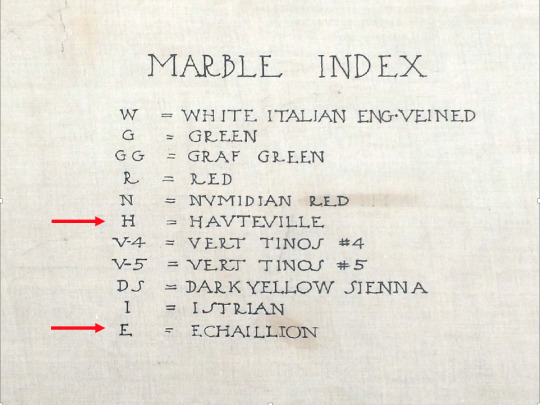
Fig. 6: Marble index E and H letters

Fig. 7: Échaillon fossils
The other French limestone used in the Carnegie is Hauteville. This limestone was quarried from the Plateau d’Hauteville in the Ain Department, in eastern France. I visited this quarry in 2016 to investigate the geology of the quarry operation, to uncover evidence of the common fossil snail Nerinea in the quarry rock (Fig. 8), and to learn more about the cultural history of the region (Fig. 9). The Hauteville limestone was used in the Grand Staircase walls, balcony features, water fountains, vestibule steps, and as floor tiles. Other locations include, the Hall of Sculpture and Hall of Architecture floors, the walls along the grand hallway, the Music Hall vestibule floor, the Founder’s Room vestibule floor, the floor and steps in the Smoking Room (now offices), the Forbes Avenue vestibule entrances to the music hall, carriage drive, and museum and fine arts. Moreover, the Hauteville floor tiles are distributed throughout the Carnegie Library of Pittsburgh main entrance corridors. The Hauteville stone is beige in color and contains many visible fossils, none more distinctive than the robust Nerinea, a 12.7 cm/5-inch-long snail that serves as the index fossil for the limestone identification (Fig. 10).

Fig. 8: Hauteville Quarry fossil snail

Fig. 9: Hauteville directional signs

Fig. 10: Nerinea snail in Carnegie floor
Introduction to the l’Échaillon Carrières
There are three carrières or quarries in the Vercors cliffs located in the Isère River Valley that were excavated for White Echaillon or “Echaillon blanc,” Yellow Echaillon or “Echaillon jaune,” and Pink Echaillon or “Echaillon rose” during the 19th and early 20th century (Fig. 11). These unique color combinations became popular for various interior and exterior architecture features in 194 buildings in western Europe, North Africa, and the United States. In 2016, Jean Paul Rey and members of S.P.I.A. led me on a field trip to the abandoned classic l’Échaillon white quarries (Fig. 12). We explored what is thought to be a 2,000-year-old Roman quarry and walked through a maze of underground caverns and narrow tunnels that contained abandoned mining equipment. The other two Echaillon carrières are located several kilometers south in the small villages of Lignet, where the Pink Echaillon was quarried (Fig. 13) and Rovon, where the Yellow Echaillon was excavated (Fig. 14).
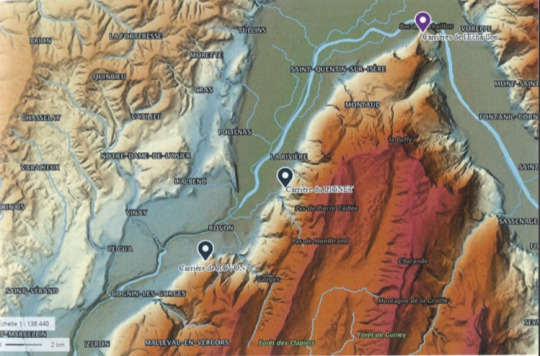
Fig. 11: Echaillon quarries locations, S.P.I.A.

Fig. 12: Visit to Echaillon

Fig. 13: Lignet Quarry Marker

Fig. 14: Rovon quarry
Cularo, Grenoble, and the white l’Echaillon stone
A fortuitous discovery was made by S.P.I.A. for their book while searching for evidence of the white l’Echaillon in the Gallo-Romans era 4th century Cularo or Grenoble, France today. In the Saint Laurent crypt that is preserved many meters below the modern-day street level tramway, a white capitol on top of a white limestone column was identified as l’Echaillon. This white capitol stone is presumably from the Roman quarry adjacent to the white l’Echaillon underground caverns. When Emperor Gratian ruled the Roman Empire from 367 to 383 A.D., he renamed Cularo after himself. Cularo thus became Gratianopolis, which through a later phonetic shift became Graignovol and then Grenoble. Although hard to find among the narrow streets and passageways of Grenoble, is a section of a Roman wall that once encircled Cularo, a portion of which is protected by a fence. This historic wall can be seen at Passage Sainte-Claire on the corner of Rue Lafayette, in the central city of Grenoble (Fig. 15). I suspect some of the white cobbles embedded in the wall may have their origin from the white l’Echaillon Roman quarry. Undoubtedly, more research will be necessary to make an affirmative conclusion.

Fig. 15: Roman wall
“Geology of the l’Échaillon Carrières”
The drawing of a new geologic map on the l’Echaillon carrières by Professor Thierry Dumont of the Université Grenoble-Alpes, confirms stratigraphically, the ages of the three limestone quarries. Among the three, the white Echaillon limestone is late Jurassic in age, whereas the pink Lignet and yellow Rovon limestones are early Cretaceous in age. The formal geologic name for the rose and yellow limestones is the Urgonian Formation. Fossils are abundant in the three limestones. Dr. Claudie Durand of Le musèum d’Histoire naturelle de Grenoble (Fig. 16) curated a diverse collection of 163 species of invertebrate fossils from l’Echaillon first published in 1919. Geologically, the three limestones were deposited in the tropical Tethys Seaway a circum-equatorial ocean of the Mesozoic Era. The strata form the Vercors carbonate platform, a buildup of late Mesozoic rudist (bivalve mollusk) reefs spanning 25 million years of evolution from (late Jurassic 140 million years ago to early Cretaceous 165 million years ago) (Fig. 17).

Fig. 16: Dr. Claudie Durand

Fig. 17: Rudist (bivalve) reef fossils
The Rovon carrière provenance and fossils
The primary goal of this research is to define the geology and authenticate the specific provenance of all marbles, fossil limestones, sandstones, and the singular igneous granite rock used in the Carnegie building. The search for the provenance of the Carnegie’s yellow Echaillon was initiated in December of 2017 by Jean Paul Rey, when we were introduced to the Forman of the modern-day Rovon quarry. After a long discussion about our objectives, he granted permission to visit the old quarry. As darkness fell, we met with a local farmer who directed us to the quarry location in the Vercors cliffs that rise some 538 meters above his snow-covered field (Fig. 18).

Fig. 18: Verors cliffs and old Rovon quarry
In October of 2018, the S.P.I.A. team pre-arranged to have several 4-wheel trucks transport ten people including Professor Fabienne Giraud-Guillot of the Université Grenoble-Alpes to the Rovon quarry. We ascended the long steep road that ended some 500 m from the main quarry. Surprisingly, the quarry was filled with massive limestone boulders that were cut by mechanical wire saws from the cliff rock (Fig. 19). Such large boulders make it virtually impossible to break with small hammers. For actual fossil collecting purposes, it is better to search for smaller size rocks to break apart (Fig. 20). This past October, transport to the Rovon quarry riding in a 55-year-old Russian built farm tractor was a treat (Fig. 21). And the fossil collecting was a success with 21 complete specimens collected for the museum of the diagnostic Caprina rudist bivalve clam (Fig. 22). The shape of these fossils closely resembles the fossils preserved in the Echaillon limestone in the Grand Staircase and Music Hall Foyer. Additional geologic data is being reviewed by colleagues from the Geology Department at the University of Zagreb in Croatia and the University of Ireland at Galway.

Fig. 19: S.P.I.A. team

Fig. 20: Collecting fossils

Fig. 21: Russian tractor

Fig. 22: Caprina rudist clam
“Carnegie’s Grand Staircase in the 21st Century”
A study published this month by the BMJ, formerly The British Medical Journal, suggested that “when people of all ages participate in the arts and visit museums once a month or even every few months, they are likely to be more engaged in the world and may actually live longer.” Years ago, the Oscar winner actor Russell Crowe was in Pittsburgh, and he was asked what he did on his days off. In reply, he said, “I ride my bicycle to look at buildings and the architecture of the city.” I. M. Pei states, “Architecture brings people together.” I agree.
Maybe it’s time to reconsider how the Carnegie’s Grand Staircase is promoted to the public at large. For instance, the current arrangement of the free-standing dioramas situated on the first floor, awkwardly impede the flow of patrons walking among the pillars, columns, and the taking of photographs of the Grand Staircase. Moreover, the placement of these dioramas detracts from the visual enjoyment of the famous John White Alexander multicolor murals. An artistic feature of the murals is their connection to the stone colors to enhance the first and second floors architectural features. The best vantage points to see this fabulous spectrum of color is from the third-floor balcony looking down to the first and second floors.
The Carnegie Museum of Art (Museum of Fine Arts) will be celebrating its 125th Anniversary in the fall of 2020. The Grand Staircase was designed as the showcase entrance to the Museum of Fine Arts for Pittsburghers of the early 20th Century. One hundred and twenty-five years later, perhaps, this world-class space can once again establish a new generation of museum patrons and become the destination as a place to be for its cultural and intellectual heritage. And don’t forget, this staircase can be an Instagram-worthy site for a family portrait to encourage our younger audiences to visit too.
Albert D. Kollar is the Collection Manager in the Section of Invertebrate Paleontology at Carnegie Museum of Natural History. Museum employees are encouraged to blog about their unique experiences and knowledge gained from working at the museum.
88 notes
·
View notes
Text
The Tichy Trident Inn
Description: My entry for the Reddit Bi-Weekly Build Challenge, Week 101: Lodging with Spirits; Haunted Hotels & Spooky Staycation Spots: “Known as the oldest surviving hotel in Windenburg, the historic Tichy Trident Inn offers characterful rooms, hearty meals and a handy location to explore the nearby Ancient Ruins. But just beware of the various, ahem, long term residents of the inn!”
Key Elements of Challenge: • Spooky, dark atmosphere. • Original/vintage furnishings with unique room styles. • Historical property with ghost-lore galore! There should be at least one supernatural presence.
Requirements of Challenge: • One entry per person. • Must have at least 5 bedrooms. • Residential, rental or commercial properties OK (NO apartments!). • No Photoshopping images. • CC allowed.
Gallery Link: The Tichy Trident Inn
Pictures:
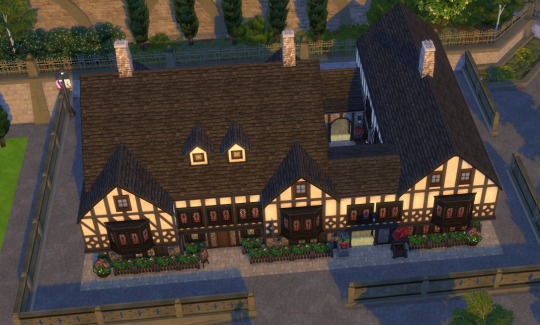
Good evening and welcome to The Tichy Trident Inn Ghost Tour!
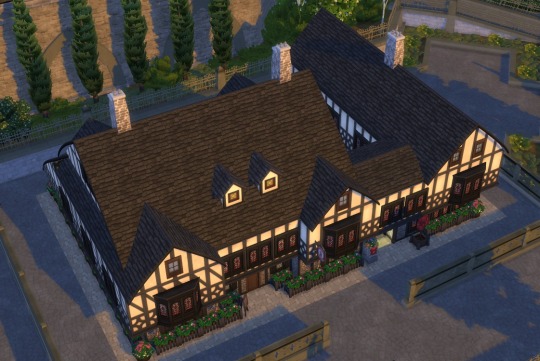
This evening, you will learn about the past of Windenburg’s oldest surviving hotel and explore areas of the inn which are generally not accessible to the public.
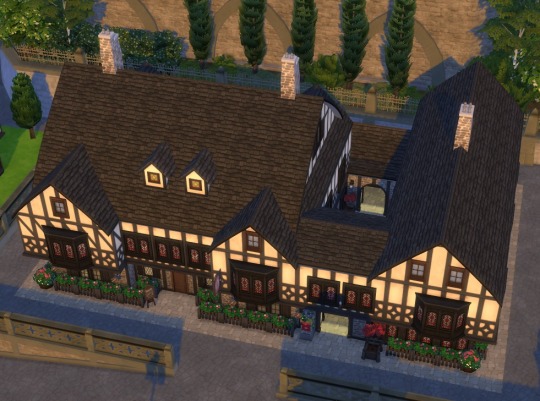
Perhaps you may even be able to see for yourself whether The Tichy Trident Inn lives up to its reputation as the most severely haunted building in Windenburg.
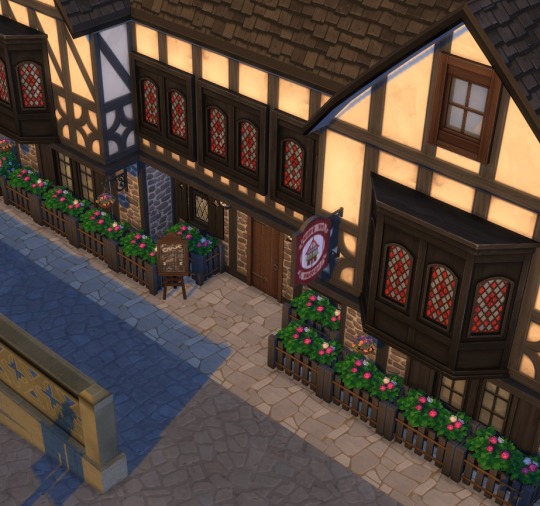
Now let’s head inside to begin our tour!

Let me begin by telling you a little about the inn’s history.
The first recorded history of there being a building on this site was from about 800 years ago when the Ancient Ruins were mere Ruins and the inn was just a pub.
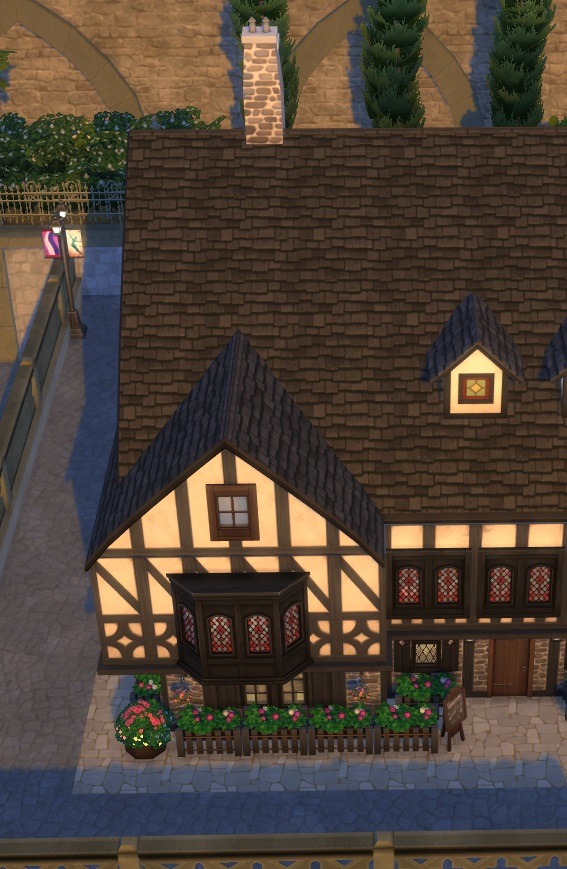
This is the oldest part of the inn and formed the entirety of the pub which was on this site 800 years ago.
The pub served as the first port of call for many a weary sailor (or smuggler) who arrived in Windenburg.
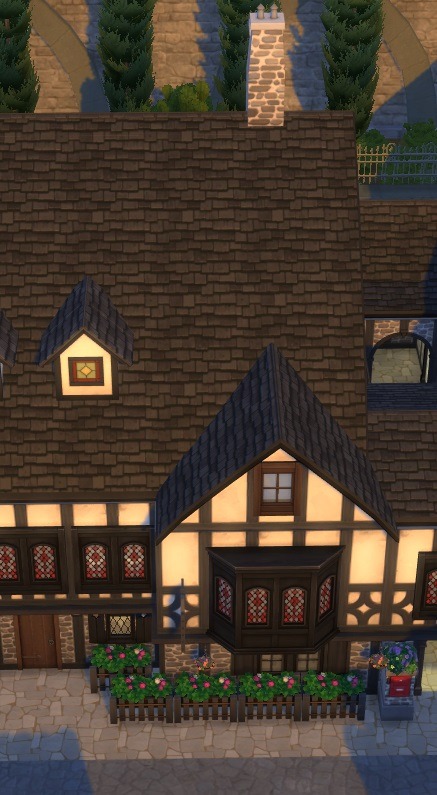
This extension was added when the pub was converted to an inn around 600 years ago.
Back then, Windenburg was a powerful maritime hub and its port bustled with activity day and night.
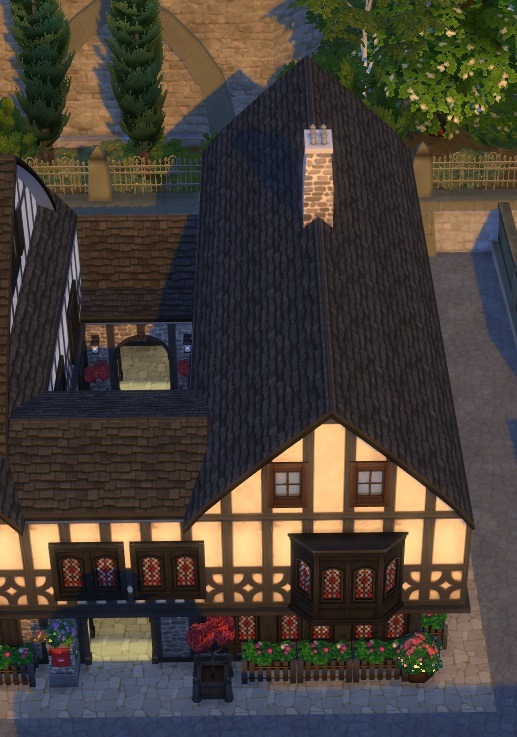
The inn was further extended about 400 years ago to cater to the many travellers who passed through Windenburg to reach the newly-opened University of Britechester.
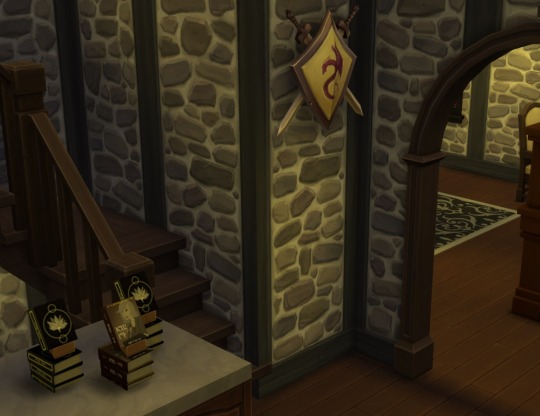
Due to the age of the inn, it was one of the first buildings ever to be granted the Simsonian Heritage Award. You can see the plaque right here in the lobby!
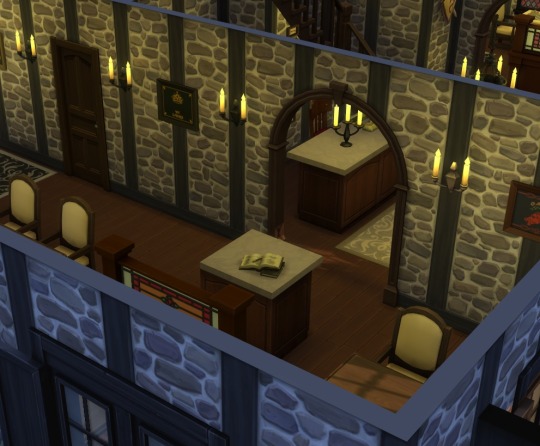
We are now in what was the bar room of the original pub on this site.
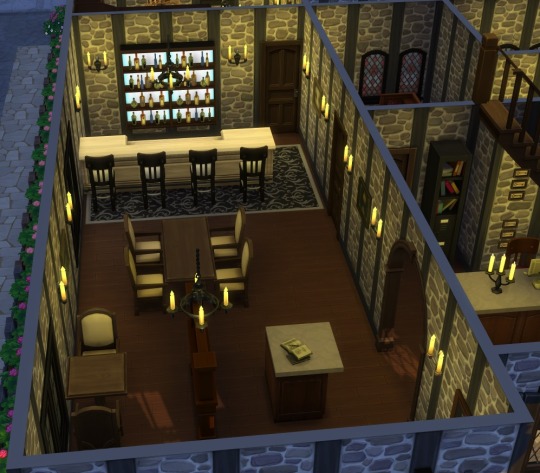
It currently serves as the bar/ dining room of the inn.
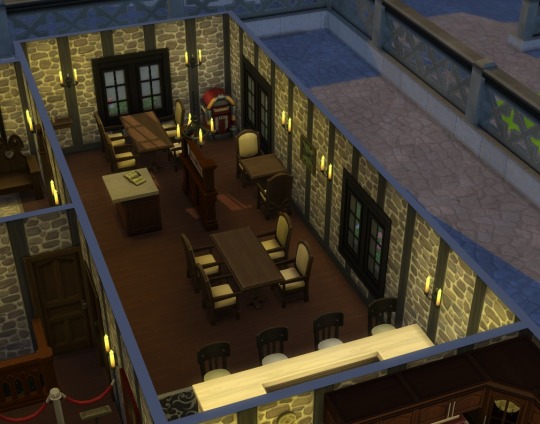
Back when the inn was a pub, there was a sailor who practically lived here and had to have 10 drinks each night he was here.

The sailor reportedly liked sitting near this window so that he could watch the comings and goings of the street outside as he drank.
One night, before the sailor could finish his 10th drink for the night, he was called away by someone. The sailor was never seen alive again.

Soon after, glasses were seen flying across the bar room, furniture in the pub were smashed to bits and patrons complained of being nudged out of their seats by unseen forces.
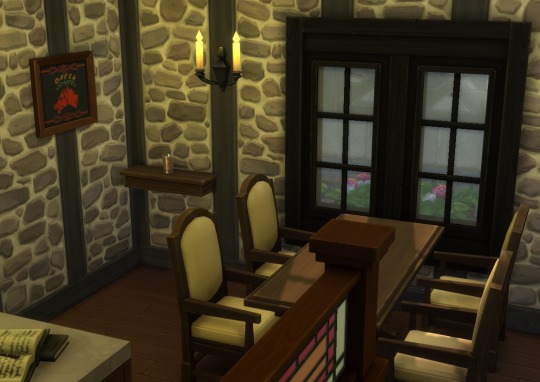
These incidents stopped when the then-pub owner decided to leave a drink near where the sailor used to sit and drink.
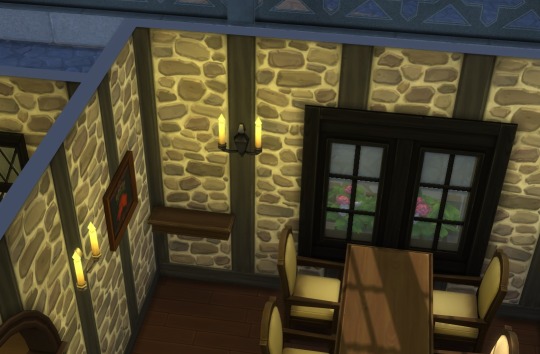
About a century later, a particularly cost-conscious pub owner decided to stop leaving these free drinks out to cut costs.
Havoc ensued and the pub nearly went out of business.

Since then, every sensible proprietor of the establishment has left a drink here every night.
And returned in the morning to find an empty glass.
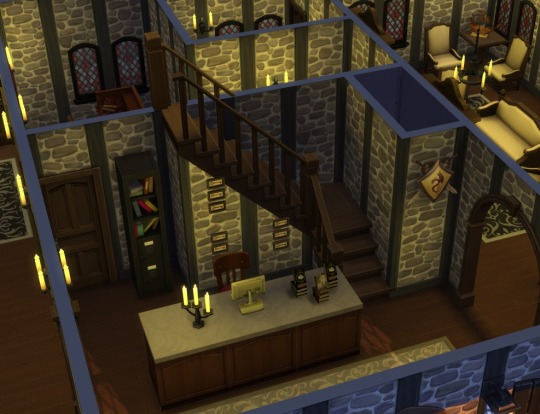
Now let’s return to the lobby and head upstairs for the next part of our tour.
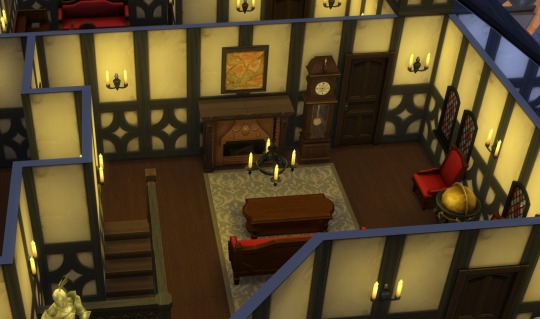
The Tichy Trident Inn boasts 5 charming suites.
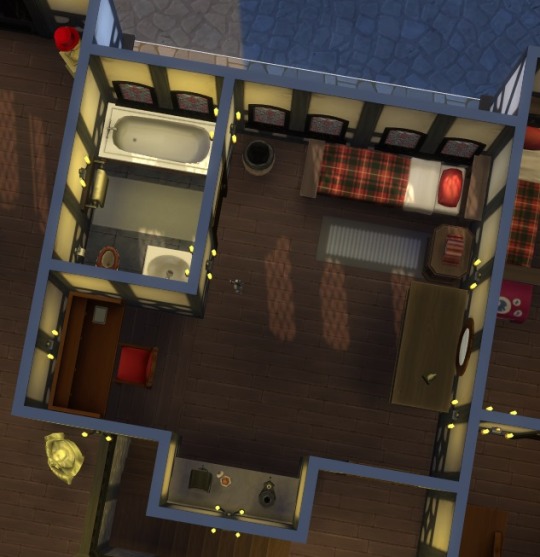
A single suite.
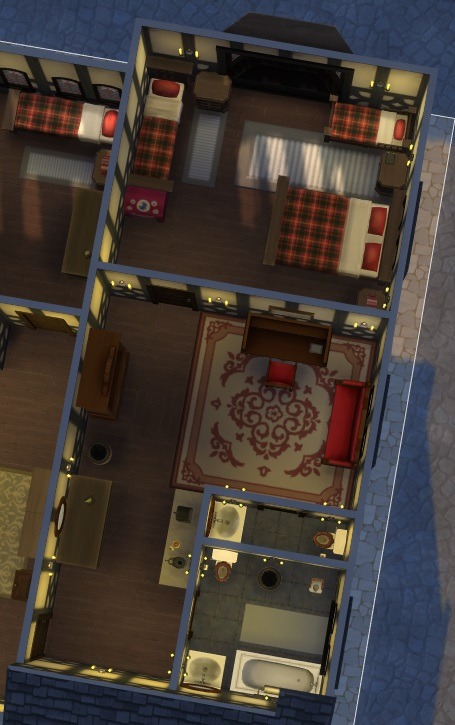
A family suite.
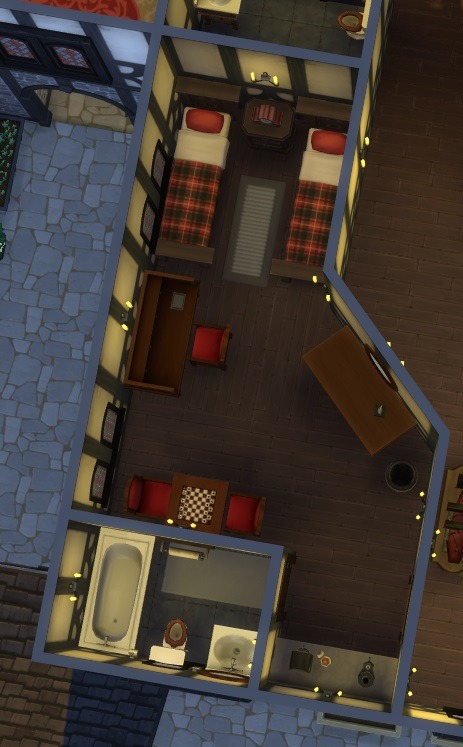
A twin suite.
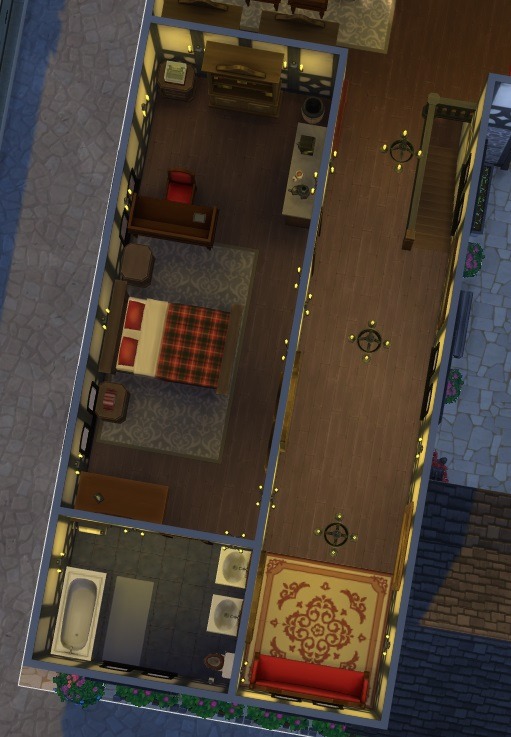
A double suite.
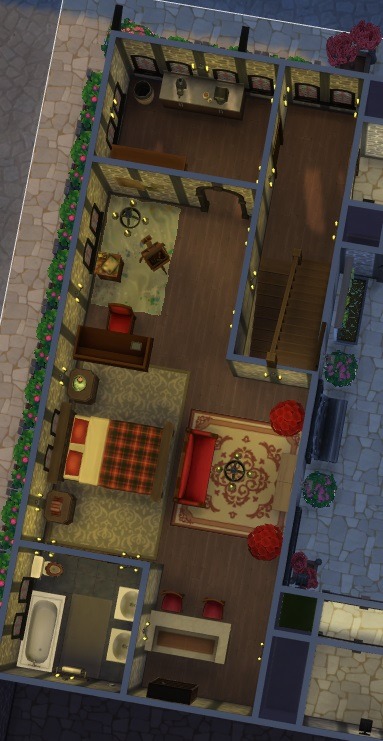
And a honeymoon suite.
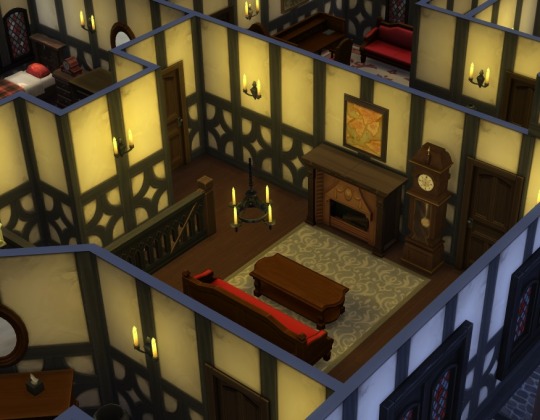
Each suite offers its own en-suite bathroom, coffee and tea making facilities, complimentary cookies, a writing desk and complimentary use of a slablet.
But for the purposes of our ghost tour, what is key is that paranormal activity has been reported in nearly all the inn’s suites. We will be visiting each of the supposedly haunted rooms in turn.
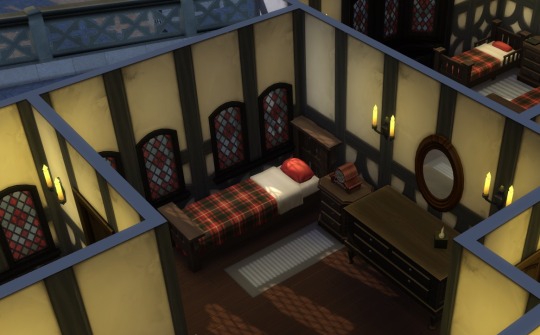
A previous guest of the inn’s single suite was a promising young violinist, Madelina Martinelli, who came to Windenburg in the hopes of becoming a court musician at Windenburg Castle.

Unfortunately, before Ms Martinelli got the chance to attend the audition for court musicians at Windenburg Castle, she succumbed to the then-fatal Llama Flu which was sweeping through Windenburg.
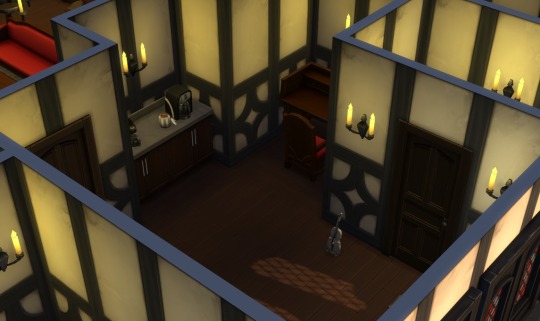
Ms Martinelli’s violin remains in the suite for the use of current guests.
However, guests are warned that if they play the violin poorly, the violin’s original owner may give them an, uhh, impromptu violin lesson in the middle of the night.
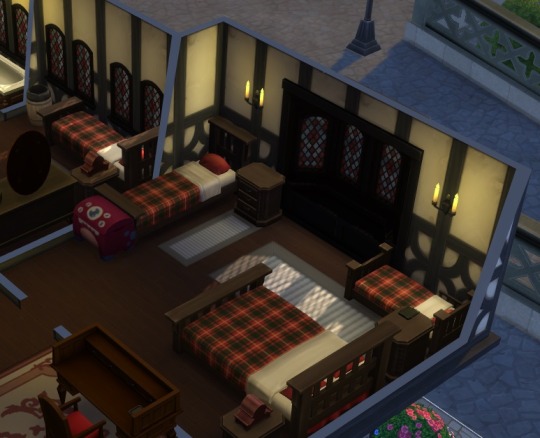
Featuring enough beds to fit 4 Sims (including a bed for toddlers) and a toy chest, the family suite of the inn is very popular with families and nearly always booked throughout the year.
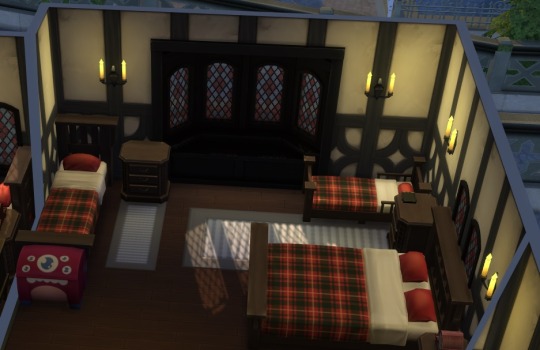
What these guests may not know is that the toy chest was placed here to appease the spirits of some children who perished here in the Great Fire of-

Uhh, that toy wasn’t there just now, was it?
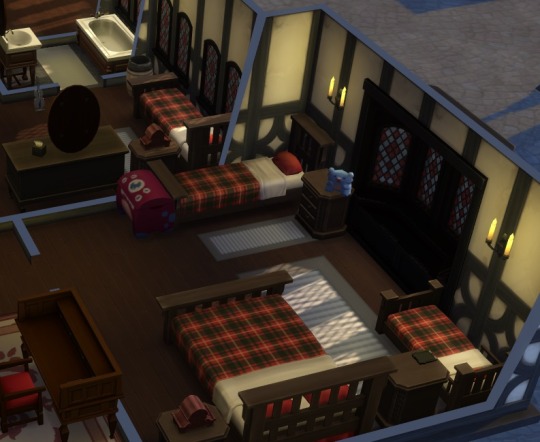
Ok, who put that toy there when my back was turned?
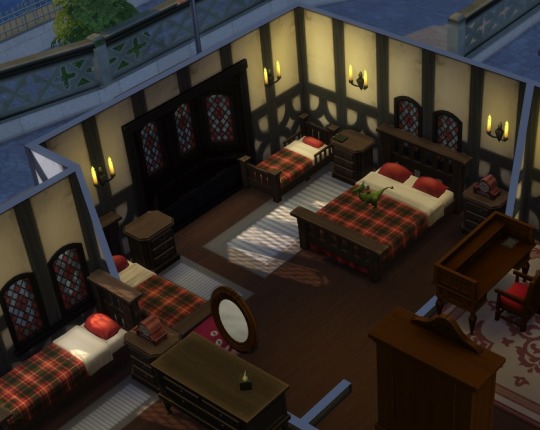
Did anyone put that toy there? Did anyone even touch the toy chest at all???
(faint giggling of children from all 4 corners of the room)
Let’s… Let’s just… move on then, shall we?
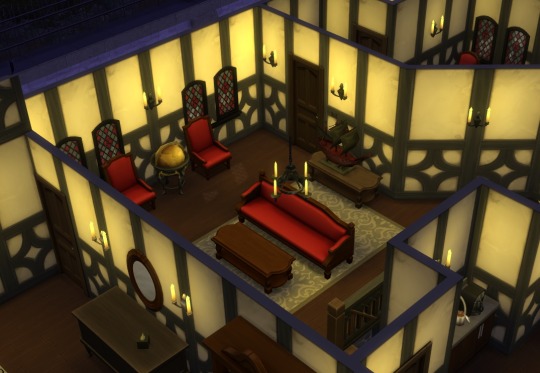
Back in the landing, I note that that door leads to the twin suite which is the only suite in the inn that does not have any ghost stories attached to it.
This is supposedly thanks to the model ship of The Tichy Trident beside the door, which is made from wood sanctified by the Venerated Watcher.
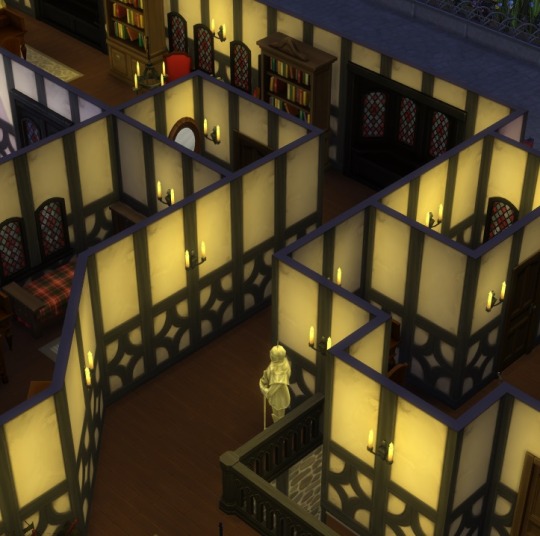
The records of the inn show that this suit of armour was installed after a series of guests’ complaints about the theft of items from their rooms.
Since then, the inn has not encountered a single incident of theft.
But guests seem to have instead taken to complaining about the sounds of creaking metal in the corners of the corridor...
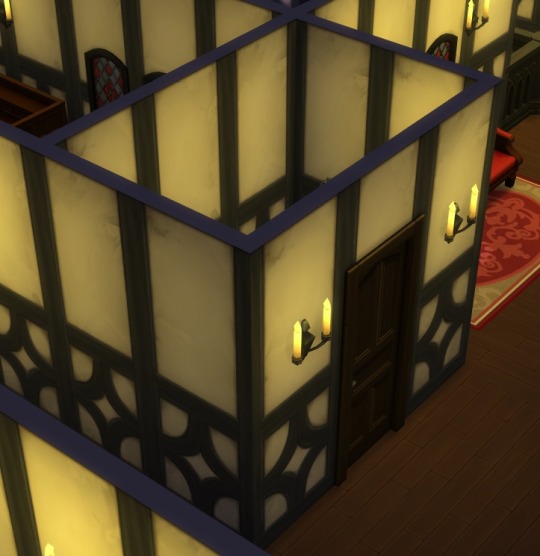
Does anyone need a quick bathroom break before we continue with our tour?
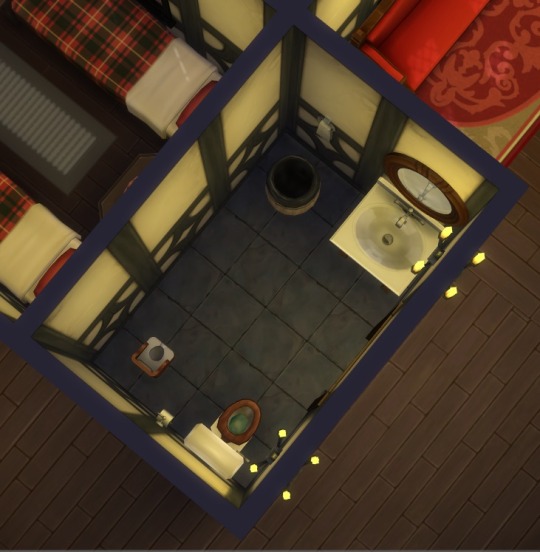
Anyone at all? No? Alright, let’s move on then.
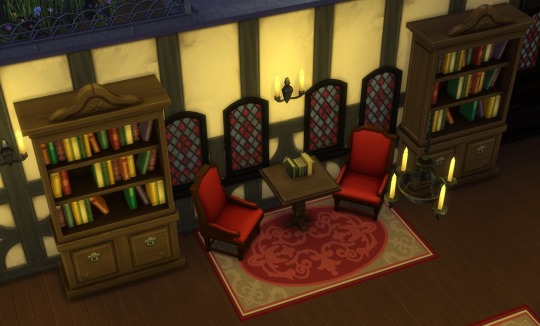
We are now in the inn’s library.
It was set up to cater to the many academically-inclined travellers who passed through Windenburg on their way to study or work at the then-newly opened University of Britechester.
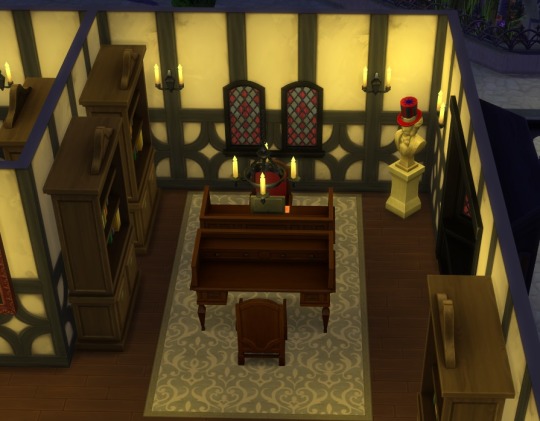
No known ghost stories about the library.
Although that computer in the far end there HAS been known to be rather erratic, especially at night…
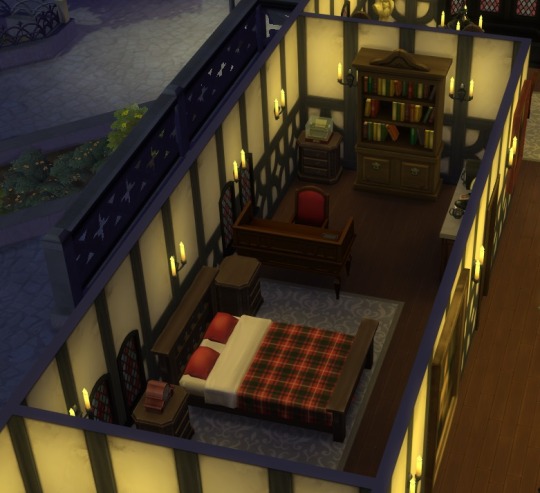
The inn’s double suite used to be occupied by the bestselling horror novelist, Lady Daphne Rice.
It was in this very room that Lady Daphne produced many of her most well-loved books like “Conversations with the Ghouls”.
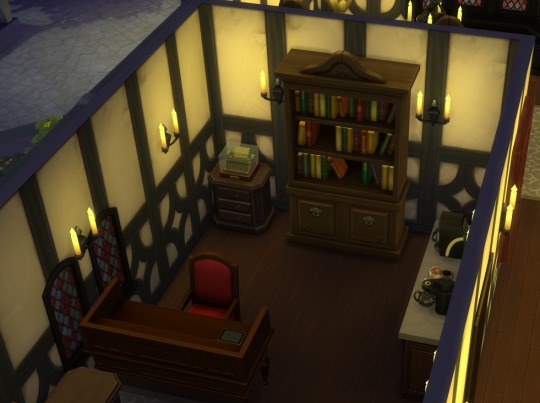
Lady Daphne initially came to Windenburg for about a month to seek inspiration at the Ancient Ruins for her upcoming novel. Lady Daphne ended up loving Windenburg so much that she spent the rest of her life here.
Indeed, some say that Lady Daphne never left Windenburg or the inn.
On certain quiet nights, one could almost hear the distinctive clittering and clattering of Lady Daphne’s typewriter in the corner…

In the height of its prosperity about 200 years ago, the inn added a small but excellent picture gallery to its facilities.
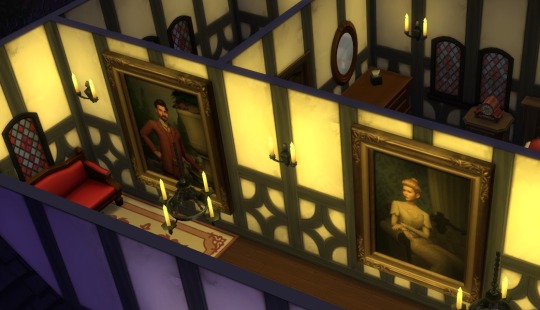
In exchange for giving him a far lower rental rate, the then-owner of the inn even managed to get Mr Brian Leighton, the artist who painted the portraits of Lord and Lady Shallot in Von Haunt Estate, to replicate those portraits for the inn.
More on Mr Leighton later…
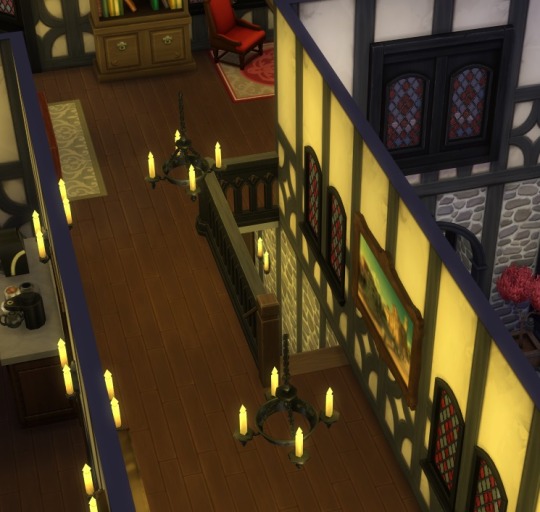
We will now move downstairs to visit the final suite in the inn.
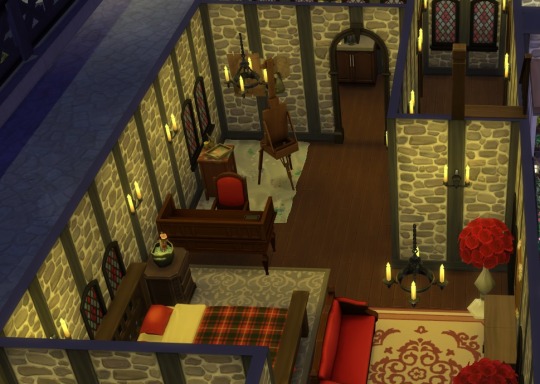
Mr Leighton, who painted the Shallots’ portraits, once lived in what is now the honeymoon suite.
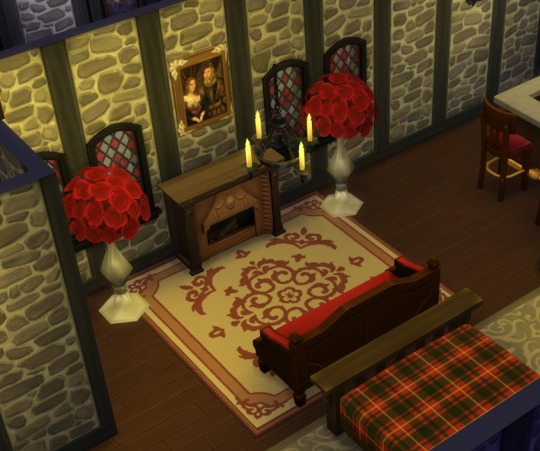
The honeymoon suite was created to pay homage to Mr Leighton’s, uhh, many romantic exploits.
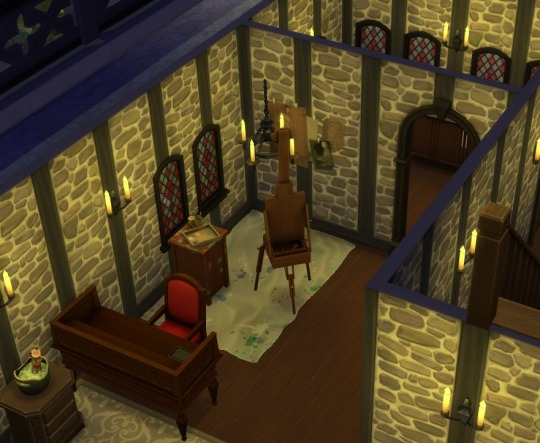
Guests are welcome to use the easel on which Mr Leighton himself painted.
However, they are discouraged from leaving their unfinished paintings on the easel overnight. Those who have disregarded this have found their work, for lack of a better word, vandalised.

We will now head into the basement to explore a small portion of Windenburg’s famed labyrinthine network of underground tunnels.
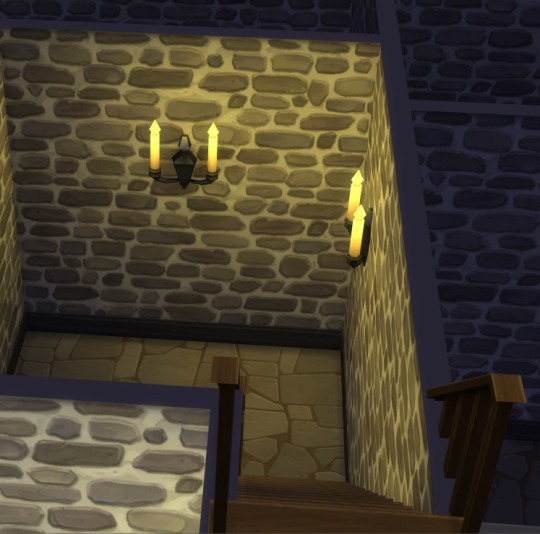
Nobody knew who first built these tunnels or how many of these tunnels there are.

Archaeologists estimate that we have only excavated at most 10% of all these underground tunnels.
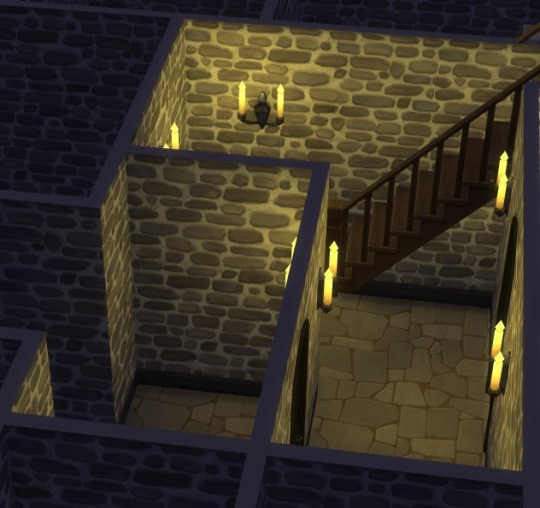
But in any case, since time immemorial, people have lived, worked and died in these tunnels.
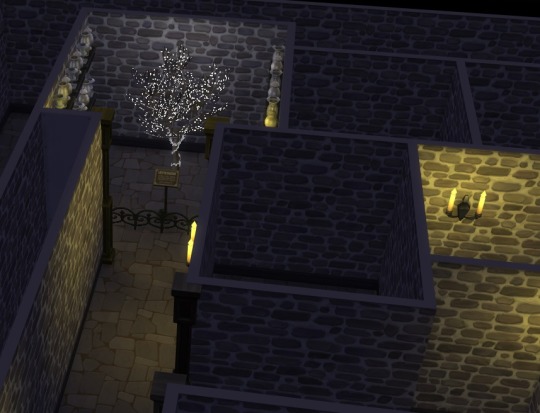
In the basement of The Tichy Trident Inn, we have discovered what appears to be a shrine of some sort.
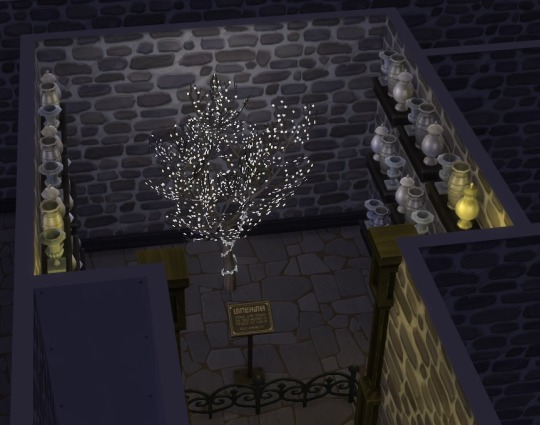
This mysterious glowing tree appears to be able to grow without any known source of nutrients.
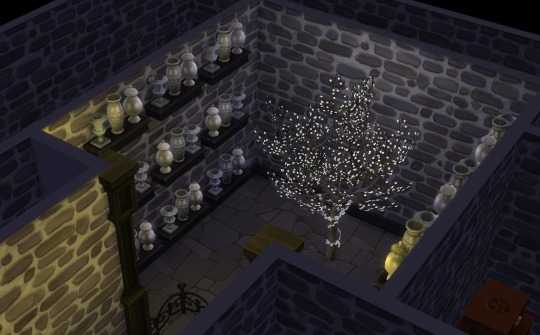
Note the neatly arranged rows of urns surrounding the tree.
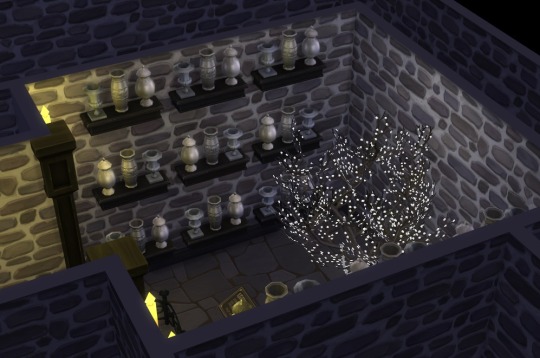
It is unclear whose remains are in the urns, who placed the urns here or why the urns were placed here.
But archaeologists note a particularly important point: the remains in the urns are all from different eras ranging from 1,000 years ago to 50 years ago. This suggests that somebody has been collecting them systematically over the years. HMM.
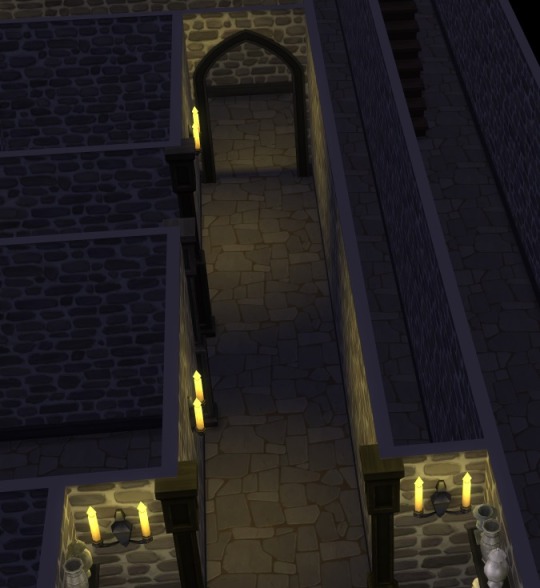
Alright, alright, that’s enough scaring ourselves for one night.
Let’s get out of here.
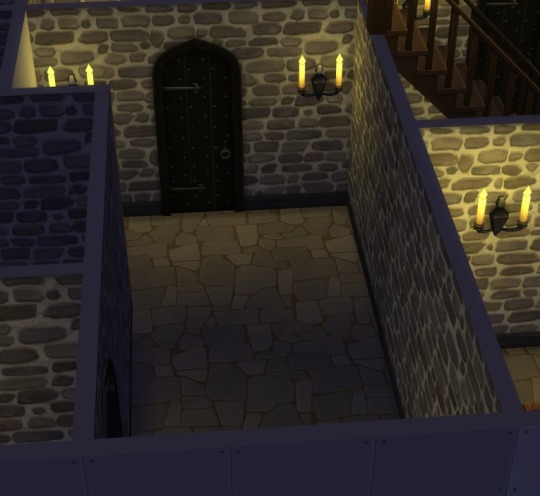
Nearly there.
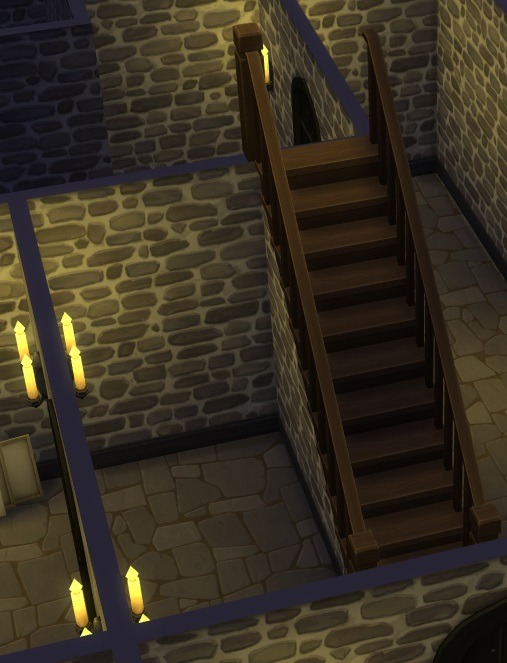
Up those stairs and we will be out of here!
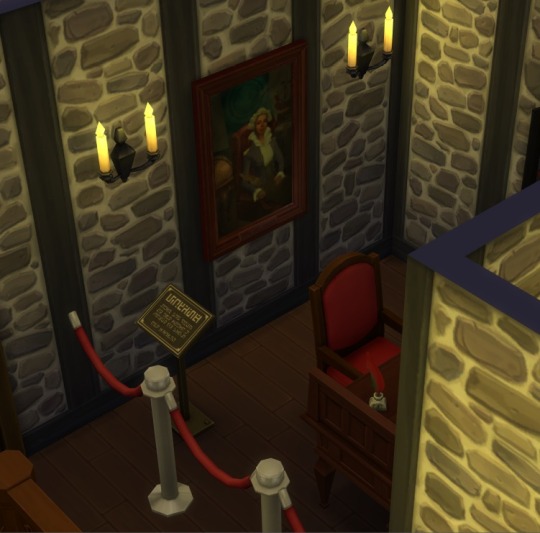
Well, not quite. We have one final stop on our tour.
This is the former office of Mrs Bernadette Beecham who ran the inn like clockwork for over 50 years.

When the current owners of the inn took over the management of the inn, they attempted to remove this office in order to create a bathroom for the staff on the ground floor.
However, after numerous… incidents occurred during the renovation, the current owners gave up on their plan and roped off Mrs Beecham’s former office to prevent anyone from touching the desk.
No incidents have been reported since then.

This is a portrait of Mrs Beecham.
Strangely, there have been reports of a staff member who looks just like her wandering around the inn and tidying things up in the middle of the night…
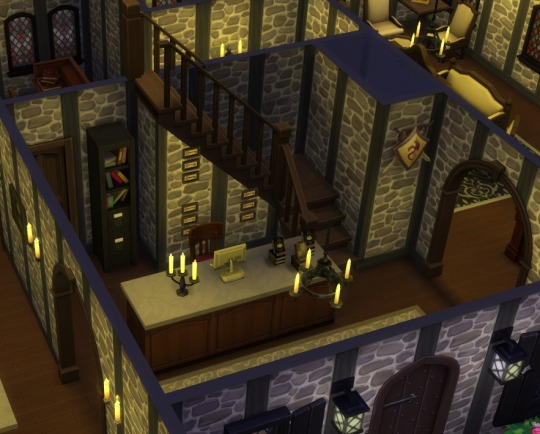
And now we are back at the lobby where we started the tour.

Before you leave, do check out the books that we have on sale in the inn.
“The Tichy Trident Inn: Its Ghosts and Roasts” is an especially popular read!
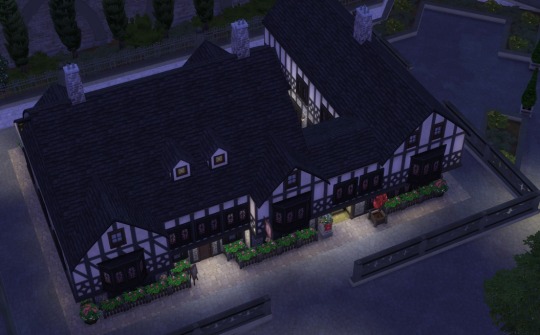
We have come to the end of The Tichy Trident Inn Ghost Tour.
Thank you for joining us, and good night!
#redditbuildchallenge#windenburg#hotel#inn#haunted#spooky#scary#tudor#historic#traditional#moo#nocc#ghost#ghost tour#the sims#the sims 4#the sims 4 challenge#ts4#ts4 build
3 notes
·
View notes
Text
Shout My Love For You (Actually, No)
Grandmaster of Legal Cultivation 律道祖师 - Chapter 3 (standalone)
Valentine’s Day Special (a day and a half late)
Law Students + Flatmates AU (though the legal aspect isn’t apparent in this chapter)
I intended to write this for the WangXian Week prompt “Valentine’s Day”, but it evolved into something else.
***
A heavenly aroma wafted through the kitchen as Xiao Xingchen pulled a tray of cookies out of the oven. His gaze raked over the black, white and grey lines and curves decorating each heart; the unconventional colour scheme worked surprisingly well. Biting into a cookie, he let the fragrant sweetness suffuse his senses and concluded that he was satisfied with the result.
It was a shame that Song Lan wasn’t here to taste his handiwork, but at least A-Qing would like them. Jiang Cheng, who lived in the opposite flat, would probably enjoy some cookies too—Xiao Xingchen guessed that as a currently single gentleman, Jiang Cheng was planning to spend Valentine’s Day with Netflix for company, so snacks would be in order.
At that moment, the doorbell rang and a bright voice sang out: “Gege! I’m—huh? Why are you...”
Xiao Xingchen was bemused for a second before a cacophony of screams penetrated the wooden door and rattled his soul.
His heart lurched. What on earth was going on? “A-Qing!” Dumping his tray onto the countertop, he raced to the front door, fumbled with the lock and slammed the door open.
A-Qing was right in front of him, but her back was turned. She was facing a young lad in a neat white shirt, whose cheeks were as pink as the delicate bouquet of roses he held. Behind him, a horde of boys vibrated in excitement, grinning from ear to ear. Half of them were still screeching until they locked eyes with Xiao Xingchen, whereupon they ceased abruptly.
An eerie silence rapidly descended on the scene as all the boys stared at him. The colour drained from the face of the lad with the roses. Clear as day, every one of their expressions read: I think we just botched our mission.
A-Qing noticed the change that befell them and whipped around to face Xiao Xingchen’s wild eyes and tense stance. “Gege!” She paused, noting that he was poised to beat the living daylights out of any potential threats, and continued in a more placating tone: “Gege, it’s nothing.” She gestured at the boys. “They’re my friends from school. Sorry for making you worry.”
Roses Boy regained his senses the fastest among the lot. He gulped, then rallied and bowed. “I’m sorry that we disturbed you! We didn’t mean to.” His buddies (including the Lan kids and Jiang Cheng’s nephew, Xiao Xingchen noticed) quickly chimed in with a clumsy chorus of apologies.
Xiao Xingchen’s brow unknitted. “It’s fine. I’m glad no one was being murdered outside my door.” He assessed Roses Boy. Despite his ashen complexion, the lad had a winsome air about him. There was an open, earnest look in his gaze that was offset by the nervous way he gripped his bouquet, lending his mien a certain charm.
Xiao Xingchen made a split-second decision. He flashed a reassuring smile at everyone and said, “I’ll go inside to pack my cookies. I’ll leave the door unlocked so you can come in whenever you’re done.”
After he shut the door, he heard a low bubble of very, very suppressed squeals and hollers, presumably as Roses Boy made his heartfelt declaration of affection.
Roughly twenty minutes later, the group of teenagers hesitantly filed into Xiao Xingchen’s flat and were treated to cookies. A-Qing, looking uncharacteristically shy, rummaged around in the cupboard for a vase for her newly-acquired flowers.
Xiao Xingchen had just found out that Roses Boy was the Ouyang Zizhen that A-Qing had been talking about for the past five months when a terrified shout ripped through the air.
It came from the opposite flat.
“Stay here!” said Xiao Xingchen hastily to the kids before rushing over to Jiang Cheng’s apartment.
He hammered on Jiang Cheng’s door. “Jiang Cheng? What’s going on?”
From this close, he could make out the content of the frantic yells. “Go away! Make it stop!”
To his surprise, that sounded like Wei Wuxian. Weren’t he and Lan Wangji supposed to be out on a date?
“Wuxian?” Xingchen called, but received no reply except panicked yelps.
After a number of bangs and scuffling noises, the flat turned quiet. Then the door opened and Wei Wuxian tumbled right into Xiao Xingchen’s arms.
Xiao Xingchen steadied him and gave him a once-over. He didn’t seem physically hurt. “Are you okay?”
Wei Wuxian shuddered. “No.”
Lan Wangji came out of the apartment. Running a hand across Wei Wuxian’s back in comforting circles, he enlightened Xiao Xingchen with one word: “Dog.”
Lan Wangji steered the quivering human-shaped jelly aside, giving the doorway a wide berth. Jiang Cheng exited the flat, somehow wearing a frown and an expression of resignation at the same time. A Shih Tzu wriggled innocently in his arms.
“I’ll take Dolly home.” Jiang Cheng stroked the lapdog soothingly in a way that was uncannily similar to how Lan Wangji was rubbing Wei Wuxian’s back.
Lan Wangji nodded. “We’re sorry for inconveniencing you.”
Jiang Cheng gave a small shrug. “Not a problem.” Grudgingly, he added: “Sorry for the scare. I didn’t expect you to be home until a lot later, so I thought I’d bring Dolly over to visit.” Even more grudgingly, with a look faintly reminiscent of someone having his teeth pulled out, he continued: “It’s decent of you to think of me and come back, though I really wouldn’t have minded if you two went for a good meal to celebrate.”
“...It’s not like Lan Zhan and I don’t eat together often,” said Wei Wuxian, eyeing Dolly warily from the safety of Lan Wangji’s arms. “I wanna watch the new episodes of Shadows of the Burial Mound with both of you. It’s fun to host a running commentary together throughout the show.”
This made Jiang Cheng’s semi-permanent scowl almost nonexistent—a rare and admirable feat.
“Mmh. I’ll be back soon.” He strode down the corridor, nodded to Jin Ling—who, alongside the other kids, was craning his neck to watch the drama unfold from Xiao Xingchen’s doorway—and vanished around the corner.
Wei Wuxian looked at Xiao Xingchen ruefully. “Sorry for the ruckus.”
Xiao Xingchen shook his head. “Don’t apologise. It’s not your fault that you’re afraid of dogs...Hang on.” He went into his flat and brought out a container of cookies. “Eat the remains of your shock away. Happy Valentine’s Day.”
***
When Xiao Xingchen resettled back onto his couch, his handphone rang. It was a call from Song Lan.
A-Qing eagerly grabbed the phone from the coffee table, pressed “accept”, and put it on speaker mode. “Song-gege, hi! Xingchen-gege baked cookies but you’re not here so don’t mind if I eat your portion!”
The response was a series of piercing shrieks which sent them all reeling backwards. Lan Jingyi gaped at the phone. “That’s one heck of an overreaction!”
Xiao Xingchen massaged his temples. Why was everyone screaming on Valentine’s Day?
Staticky crackles emanated from the phone, but they failed to completely obscure the voices crying: “Put the scorpion down!”
“EEEEYAAAAAGH!!! Song Lan, throw it away!”
“Shit, this is the biggest one so far, it’s almost bigger than his palm!”
“Why are you using your bare hands?!! Get the tweezers!”
Everyone in Xiao Xingchen’s living room felt their eyes widen inadvertently. Xiao Xingchen sighed.
Song Lan’s level tone cut through the clamour as smoothly as a blade cuts through tofu. “There’s no time to find the tweezers; it was almost in our food. Calm down, I’ll take it somewhere far away.”
The racket gradually died down to an indistinct hum as Song Lan put more and more distance between himself and his groupmates. Then the only sound left was Song Lan’s measured breaths, followed by a quiet “Off you go.”
Unbeknownst to Song Lan, his audience on the other side of the world let out a sigh of relief for him.
“Sorry, A-Qing. Dealt with some trouble just now. You were talking about cookies?” Song Lan resumed his phone conversation as casually as if he had merely stopped to tie his shoelaces.
“...Yes. Xingchen-gege baked Valentine’s Day cookies. I was going to eat your share but I’ve decided against it, because I hope the cookies can incentivise you to come back alive, preferably without missing an arm or an immune system. Are you sure you’re okay?”
There was a pause as Song Lan presumably checked his body for injuries. “I’m fine. I...” He hesitated.
“Please continue,” urged Xiao Xingchen.
“...I have one cut where the grave robbers tried to stab me when they tried to grab the artefacts we were transporting from Empress Minyan’s tomb, but it’s completely healed already. Just a scar.”
“What the hell,” mouthed Lan Jingyi silently to Lan Sizhui. Then he nudged Ouyang Zizhen and whispered, not too quietly, “Zizhen, this guy is gonna be one of your in-laws.”
Both Ouyang Zizhen and A-Qing elbowed him. “We aren’t engaged!” A-Qing hissed, also not too quietly. Even louder, she said, “Also, Xingchen-gege and Song-gege aren’t in that kind of relationship...yet.”
Xiao Xingchen wanted to bury his face in his palms. Song Lan probably heard that last part. It was devoid of all subtlety, volume and content-wise.
Song Lan asked: “May I talk to you in private?”
“Sure.” Xiao Xingchen picked his phone up and switched speaker mode off, ignoring A-Qing’s waggling eyebrows.
In the safety of his bedroom, he said, “I’m alone now. Zichen, are you hurt anywhere else?”
“No. Only one scar this time, and it’s painless.”
“Please be careful. Just let the scorpion eat your food, it’s better than risking a sting.”
“I can’t do that. This is the first proper meal I’ve had in a month. We mostly subsisted on canned food at the excavation site, but that’s over now.” Song Lan said all of this matter-of-factly, without a hint of joy or complaint. But he sounded more appreciative when he added: “Now we have proper showers.”
Xiao Xingchen felt a grin spread across his face. That was so like Song Lan; stoic in the face of danger, enduring challenges with fortitude, only allowing his mysophobia to surface once the need for grit in the circumstances had passed.
“That sounds very nice, after so long. And good job for completing your task. Proud of you.”
Song Lan was silent for a few seconds—Xingchen could imagine him almost-smiling—before he said, “I look forward to having your cookies, if A-Qing hasn’t eaten them all by then.”
“She won’t.” I wouldn’t have used the monochrome colour scheme that you like if I didn’t intend to save some for you.
“I have something for you too," Song Lan informed him. "It’s supposed to arrive in the mail at our flat today."
Right on time, a knock sounded once on his bedroom door before A-Qing bounded in. “Song-gege sent you something! Thought you’d want to see it before you end your call.” She dropped a package onto Xiao Xingchen’s lap.
Xiao Xingchen’s curiosity soared. He and Song Lan hardly ever did surprises, so receiving a mystery package was extra exciting. “A-Qing just brought it in. May I unwrap it?”
“Go ahead.”
Xiao Xingchen eagerly peeled away the layers of cardboard and cushioning material and pulled out a small rectangular picture frame. Splashes of purple, white, yellow and pink spread from one end to the other, a demure palette of tiny pressed desert blossoms.
A card was attached to it. High on anticipation, Xiao Xingchen flipped it open.
It read:
“I tried very hard to find flowers in the Gobi Desert, and I was lucky to have found them.
I hadn’t tried very hard to find someone I love among the billions of people in this world, so I am incredibly lucky to have somehow found you anyway.”
A-Qing was unabashedly peering over Xiao Xingchen’s shoulder and reading the card. Then she shrieked in his ear.
Dazedly, Xiao Xingchen thought again, today is full of screams.
“FINALLY! Song-gege, you finally found the guts to spit it out!” Bouncing on the bed, A-Qing grabbed Xiao Xingchen’s phone and yelled: “CONGRATULATIONS!”
Outside, Lan Jingyi commented to Ouyang Zizhen: “She’s a tad more excited now compared to when you confessed.”
Ouyang Zizhen ground his knuckles against Jingyi's abdomen, making him squawk. “That’s probably because I haven’t waited for years and years before saying the things I should say!”
Dimly, Xiao Xingchen noticed that his fingers were trembling. He put the card down and fumbled for his phone from A-Qing. He let out a helpless sort of chuckle, overflowing with fondness and warmth.
“...I love you too,” he said, a little hoarsely.
He thought he was acting in a frankly ridiculous manner—he already knew he held a treasured place in Song Lan’s life; it was evident in the way Song Lan treated him and looked at him (attentively, tenderly, eyes an inky, endless depth of unspoken but understood promises and everlasting faith), but he couldn’t help but metaphorically jump for joy to have those feelings irrefutably manifested in clear words.
He heard Song Lan let out a small gust of a breath, like a laugh, but one that was incomplete because he was too overwhelmed to do it properly.
When Song Lan spoke, Xiao Xingchen could hear the smile in his voice, a tinge of sunshine through the leaves. “See you soon.”
“Happy Valentine’s Day.”
***
Click my AO3 username in my profile to read the other standalone chapters in this fic :) Kudos and comments are appreciated! What do you think of this sort of Xingchen and Song Lan? Are their characterisations okay?
IS SONG LAN SMOOTH OR NOT? Because that’s how I’m gonna woo a boyfriend if I ever go to the desert ahahahahaha 😄🔫
#grandmaster of demonic cultivation#the founder of diabolism#mo dao zu shi#mdzs#魔道祖师#my mdzs fic#valentine's day#xiao xingchen#song lan#a-qing#wei wuxian#lan wangji#jiang cheng#ouyang zizhen#lan jingyi#a dog#songxiao#shuangdaozhang#and mentions of#lan sizhui#jin ling#a hint of#wangxian
27 notes
·
View notes
Text
vir lath sa’vunin
The end of the Fifth Blight heralds a new dawn for Ferelden and her peoples, but consolidating support for the young new king will not be easy, and rebuilding would be an arduous task even without the threat of residual darkspawn and fresh new horrors lingering in the wake of the Archdemon. Aelinor Surana and Alistair Theirin will need all the strength, savvy, cunning, and knowledge they can muster if they are to heal their country's hurts. With help from friends new and old and their love for each other, they will face down adversity as they always have: together.
Read @ Ao3
Note: "Vir Lath Sa'vunin" is a line from Leliana's Song - the one she sings to the warden after Zathrian and/or the Lady of the Forest die during the Nature of the Beast quest line. It is an old elven song that Keeper Lanaya may share with you in the form of a codex entry. The line means "we love one more day."
Relevant to this chapter: There is an actual in-game conversation you can have with Anora in which she will directly ask you if you and Alistair are together. It really took me off guard because in my playthrough I was careful not to mention anything to Anora about Alistair other than that I think he would make a better king than she thought. But she was too sharp for my love to go unnoticed lol. You can see that conversation here.
Chapter 3: A Fereldan’s Best Friend
Aelinor entered after the announcement of the arls and teyrns in attendance but before the banns. Traditionally, the king’s chamberlain would have been second only to the king, but she had feared seeming too much of an upstart by taking her place at his side, much as he had wished her to dare it. She had become chamberlain during his coronation ceremony and like his kingship it had been openly communicated to the rest of the kingdom, but there had been no separate ceremony conferring the title and responsibilities on her. This would be her first formal appearance as the chamberlain and with so many visiting dignitaries present, she could scarce afford to make mistakes.
She came in through a side door with little fanfare from the major domo as per her request, and bowing to the king, attempted to melt into the crowd and mingle with Leliana’s advice in mind. She could feel many sets of eyes on her, leering, appraising, disdaining. Her heartbeat fluttered in her throat, but she kept her spine straight and her gaze level. There were no mages here, and the only elf besides herself in attendance was Shianni, but there were a few other familiar faces. Her background being what it was and feeling the need to justify it, she inhaled deeply and approached the gaggle of chantry sisters first.
“Sister Justine!” Aelinor inclined her head in the direction of the Denerim Chantry’s curator, who was surrounded by a number of other church officials deep in conversation. “How are your studies progressing?” Sister Justine smiled and motioned her closer. Her dark blond hair was elegantly braided as usual, though there were dark shadows beneath her eyes. Ever since the discovery of the Sacred Ashes’ final resting place she had likely been burning the candle at both ends.
“Lady Surana, come, we were just discussing the latest excavation in the old temple above Haven. The etchings we have made of verses long lost from the Chant are an archivist’s dream–both those you found, and those Brother Genitivi and many others have uncovered since.”
“Long lost? Or stricken?” remarked one of the other sisters with a sour expression. Justine raised an eyebrow at her.
“Wilhelmina, you know very well none of them connect to any of the Dissonant Verses, or perhaps to any verses we know of at all. Taking joy in their recovery is far from controversial.” Wilhelmina sniffed but said no more, narrowing her eyes at Aelinor. Being an elf and a mage and a public official, she was a flagrant offense to the natural order of things most conservative Andrastians adhered to, so it was hardly surprising.
“I can understand Sister Wilhelmina’s caution,” Aelinor said, hoping she would seem reasonable rather than sycophantic, little as she cared to appeal to someone so ready to hate her. “I did find a great deal of these writings in the den of dragon cultists, after all. But so long as we have veteran researchers like Sister Justine and her fellow scholars on hand, I trust they will parse the truth from the apocryphal. In any case, the authenticity of the ashes themselves can hardly be doubted. Without them, all of Denerim may have been corrupted by the Blight now, so I think we can all agree that the Maker had a hand in our deliverance, regardless of what may yet be discovered.” Though Wilhelmina stared her down obstinately, many of the other sisters looked at her thoughtfully or even nodded enthusiastically as Justine did. Leliana’s advice was working like a charm.
Suddenly all the sisters about her were bowing, and Aelinor turned to find that Alistair was standing right behind her, clad in leathers threaded with the strong geometric designs characteristic of the Alamarri. She bowed herself even as she sighed inwardly. He had not held out for very long.
“Your Majesty?”
“My dear sisters of the Chantry, I must allow you to excuse Lady Surana for a moment, as Arl Wulff desires her audience.”
“Yes, of course, King Alistair,” said Sister Justine. “Thank you again to you both for your service to the Chantry. I very much look forward to sharing my findings with you in the weeks and months to come.” Aelinor nodded and moved to Alistair’s side as they walked away. The dining hall was vast and Arl Wulff was located conveniently at its far end.
She noticed Alistair’s arm twitch at his side, no doubt out of force of habit. When they walked alone together, it was rare indeed that he did not take her arm in his own.
“Alistair...”
“Yes, my dear, I know,” he whispered. “I know being within twenty feet of me in the public eye makes you uncomfortable, but people will talk no matter what. We do not need to be miserable, merely professional.” She looked up at his face, but he was staring straight ahead and talking out of the corner of his mouth. So Leliana had managed to get through to him too. She smiled.
“No, you’re right. There have been few female chamberlains in the history of the country in any case, much less mage or elven individuals who have held the position, male or female. They were always going to talk. We can enjoy each other’s company even in public if we are discreet, which you have been. I am grateful for it.” He nodded slightly, and could not suppress a half-smile from quirking the edge of his lips.
“You should be. It’s all I can do not to kiss you right now.” She could feel her flush creeping up the back of her neck again and blessed the high embroidered collar she wore for covering up the worst of it.
“Not to worry, Your Majesty...I’ll be certain to show you how grateful I am once we’re alone.” Alistair said nothing to that and instead cleared his throat a bit too loudly and placed his hand for the briefest of moments at the small of her back, guiding her toward the upper right corner of the room below the dais where the Arl of the West Hills commanded a lively group of nobles. They quieted and bowed at the king’s approach, eying her with curiosity.
“My chamberlain, Lady Aelinor Surana.” She curtsied, and meeting their gazes afterward was not nearly as daunting as she had thought it would be. Of course, it helped to have the king at her side, but this crowd in general seemed to take her presence in better humor than many in attendance.
“How fare the West Hills, Arl Wullf?” she asked. The south had taken the brunt of the horde’s incursion, and would be slow to recover. But she did not want to shy away from the obvious.
“Poorly,” he replied, “but improving with the help of the capital. There is green there still, and the fall will yield a harvest. In the meantime, your efforts with the dwarves to lower the price of provisions for us in the Frostbacks have proven most helpful. And the horde itself is all but vanquished.”
“And yet,” said a new voice in careful, even tones, “is not much of the ‘help of the capital’ owed to Orlais? For it is their Wardens who have bivouacked there with the king’s approval.”
A new face emerged from the crowd, fair-skinned and clear-complexioned. Anora Mac Tir. Aelinor turned and regarded her levelly, but without malice.
“Lady Mac Tir, I need not remind you that while the Wardens have historically overstepped their bounds on certain occasions, their loyalty has always been to themselves and to their mission of protection against the Blight. In the West Hills, the Blight remains and is combated with their help. There is no ambiguity in it in my accounting, but I invite you to find some yourself, should you seek it.”
“If you don’t trust the Wardens’ understanding of it, I wonder what you consider mine, Anora?” Arl Wulff added gruffly. “The self-important prattle of an old man who seeks to solicit favors for his holdings? If you don’t believe me, visit my arling or any portion of the south yourself. The farmers fending off raiding parties and dying of plague will surely lay your suspicions to rest.”
“I did not mean to question the gravity of your situation,” Anora replied coolly. “Merely to point out how easily the enemy might move on us once these Wardens overstay their welcome.”
“Regardless of the loyalty of the Orlesian Wardens, under other circumstances Ferelden would have had its own force,” Alistair cut in, voice hard and sharp with anger. “But fate would have it otherwise, it seems.”
“Indeed,” replied Anora. “Fate would have them on the throne and in the palace chambers.”
Aelinor controlled her sharp intake of breath even as her heart pounded in her ears. Anora had baldly put the question to her prior to the Landsmeet–did she have feelings for Alistair, given the way she spoke of him in such glowing terms? Why did she believe an inexperienced and naive young man like himself could be king? Aelinor had merely replied that she thought Alistair would make a better king than Anora believed and the then-queen had let the matter drop. But of course, she had held onto her read on the situation. It was correct, after all. And Aelinor almost laughed aloud at the pun and how it could be taken as merely a statement of truth or as a double-entendre: a chamberlain in the palace chambers. It was meant to get a rise out of her and Alistair, but she would not let it. Hopefully, Leliana had schooled him well enough that it would not get to him either. She would have put a hand on his shoulder to remind him of the necessity of restraint but of course that would have just put proof to Anora’s thinly veiled accusation.
But before she could so much as speak, there was a commotion in the small crowd as her mabari barreled through the assembled nobles to reach her side, bumping his muzzle against her hand and squeezing in between herself and Alistair.
“What are you doing here, boy?” she said sharply. He wagged his tail and barked with gusto, then looked up at the rest of the crowd with dark, liquid eyes suggesting an innocence Aelinor knew he did not have. “Well, as he seems to have introduced himself without all due courtesy, I shall do my best to atone for him on his behalf. This is my mabari, Shadow. I managed to heal him of the Taint he contracted at Ostagar and he’s followed me ever since.”
Arl Wulff crouched down to get a better look at him and Shadow barked excitedly. “A fine beast. If I am not mistaken, he has recently sired several litters of puppies known for their resilience and ferocity as much as their sweet temper. I gave one such whelp to my daughter.”
Aelinor smiled, grateful for the sudden change in topic. Shadow was a sly creature, indeed. “Yes, he’s been helping to replenish the kennels here in Denerim when he is not at my side. His mate is Bertie, a bitch from the long line of Theirin hounds.” The other nobles gathered around eagerly to ask more questions about his pedigree and the line he was sire to, and Anora’s slight seemed all but forgotten. Aelinor looked for her in the crowd, but she was gone.
“Bertie?” asked Arl Wulff, no doubt amused at so plebian a title for a descendent of the likes of “Sentinel,” and “Duchess.”
Alistair grinned. “Yes, short for Camembertie.” His stomach growled audibly and he leaned over Shadow to speak to Aelinor above the vigorous mabari breeding discussion Shadow’s entrance had set off. “It will be time for dinner soon, thank the Maker. I wasn’t sure how much more of that I could take, but you weathered it well.”
“I’m sure we’ve not seen the last of it,” Aelinor replied, scanning the crowd for Anora and finding her near the group of chantry sisters she’d spoken with earlier. “But I think we managed to make a case for ourselves and maintain our dignity. It wasn’t just my doing, either, Alistair.”
“No, of course not! Shadow takes the lion’s share of the credit.” She rolled her eyes but his slight smile and the gentle tilt of his head in her direction told her that he knew he had done well and that her assurance was enough.
#alistair theirin#female warden#warden surana#alistair x warden#alistair x surana#intrigue! romance! dogs!#what more could you ask for
2 notes
·
View notes
Note
Do you think some sort of dry clay component could/should be added to leopard gecko substrate? I was researching soil content in iraq and found someone's college thesis, and it said that it contains a top layer rich in calcium and magnesium with humus, but is comprised overall in order of most to least of clay, limestone, siltstone, and some other stuff
Many people use that! If you use quality decomposed granite, a small portion of it will be clay (granite that has been weathered to a very small particle size). Other people use Excavator Clay or other clay as an ingredient.
However, in an enclosure, we can’t use a bioactive substrate that is extremely high in clay, as it would create drainage issues in the small space. Clay soil is dense, since the particle size is so small, and becomes very heavy and packed. When moistened and then dried it becomes very solid. Water will not filter through it.
In the wild, when it rains heavily in a clay-rich desert area, there are flash floods. Water flows along the top of the clay soil rather than through it.
Clay also holds a great deal of moisture in it for a long time when insulated from the heat by substrate above it. In the wild, this is great, because the surface of the substrate (looser and humus-y) will allow the water to drain through and become dry, while the clay underneath stays moist (and cooler) long, long after the rains have stopped. This allows animals to self-regulate their humidity needs by burrowing or using other animal’s burrows to reach that moister layer. Not only do reptiles take advantage of this, but so do mammals. Check out kangaroos!
However, in the arid vivarium, that’s not possible. Our substrate isn’t nearly deep enough to provide this natural gradient (and most have a solid bottom underneath), so we create artificial ones, by using humidity-holding substrates in pockets that we can moisten. If we attempted to mimic the actual desert substrate in miniature (”in shallow”), it would rot the roots of our succulents, and create a waterlogged, too-humid environment for the desert species.
Instead, in our small space, we need to use a quick-draining substrate so that water doesn’t pool. We do that by using larger particle size mineral ingredients in organic material. That includes decomposed granite, large particle calcined clay (non-absorbent fired clay pebbles), sand, volcanic rock, and so on.
However, a low proportion of clay is definitely a possible part of an arid bioactive substrate. Before you use your mixture in your enclosure, you should wet it and then let it dry, checking for drainage, that it doesn’t get dusty, that it holds burrows, and that it doesn’t pack when dried out. Proportions can be adjusted, and then the substrate can be checked again.
For those who don’t want to go bioactive, and don’t like the look of tile or paper towel, Excavator Clay is a safe and easy substrate choice that has a pretty neat look. As leopard geckos come from an area with packed clay soil, particularly rocky areas within its range, it’s a good choice.
It is actually meant as a solid substrate. You moisten it, sculpt it in the enclosure, and then let it dry, which creates a hard, solid substrate. (Reptiles should not be added to the enclosure until it is completely dry.) This demonstrates how solid clay will become! It can be re-moistened to re-sculpt or remove it. Burrows and hides can be formed directly into the clay, and decor elements can be built in (like rocks, wood, and fake plants emerging from the clay).
Because it is a solid, thick substrate, UTHs can’t be used under the enclosure. The substrate -- or even the glass -- can crack. Some people use tile over the UTH and Excavator Clay in the rest of the enclosure. Otherwise, you can use overhead heating, like an RHP or CHE.
Maintenance includes cleaning up poop and urates, which can mostly be swept off the hard clay. In many cases, however, urates will soak into the Excavator Clay so parts may need to be replaced often, unless it is possible to build in or include a non-absorbent surface where the leopard gecko poops every time (such as a Lizard Loo, rock, or tile). Some leopard geckos poop only in corners, so this is possible.
In addition, the substrate should be checked to make sure no parts are becoming dusty or crumbling.
Also, any humid pockets in the Excavator Clay (such as borrows to be used as a humid hide) need to be lined with a waterproof material, as the substrate will break down if it gets wet.
And my usual warning, because silicosis is no joke -- be careful handling any dusty mineral material, including dry clay, and when using it with a reptile. Silicosis is damage to the lungs from inhaling silica particles, and it is accumulative, meaning breathe a little now and a little later, the damage keeps happening. There is no cure, and only supportive treatments.
#leopard gecko care#leopard gecko husbandry#leopard gecko#gecko#lizard#reptile#clay#substrate#bioactive#bioactive substrate#excavator clay#my posts#anonymous#ask
38 notes
·
View notes
Photo



Frog Pendant
Date: A.D. 550–850
Geography: Panama, Playa Venado
Culture: Greater Coclé
Medium: Gold, ceramic
This pendant, in the form of a frog, is suggestive of a range of frog species in the area where it was likely fabricated (see image 1). It is made of cast metal, likely an alloy of gold with copper. Its carbonized ceramic core is partially preserved. The frog looks forward. Its spherical eyes are at the top corners of its head, and they have linear indentations in their centers. The frog’s tongue projects outward, illustrated as two spirals that are connected to the center of the mouth and at its ends by a thick, curved band of metal (see image 2). There is a plain band of metal that outlines the mouth. Another band has a chevron design, and it extends from the mouth down the center of the head and then connects with another chevron band forming a circle on the back of the frog (see image 3). The internal diameter of this circular band is 3.1 cm. The chevron band along the central axis resumes at the rear of the frog, where it emerges out of the circular band on top. The front legs project forward and, instead of naturalistic feet at their ends, they have circular suspension loops. The hind legs are bent and angled toward the ground with the hind feet projecting outward. All of these details would have been designed originally in wax. The chevron band has the appearance of filigree but the artists created this design by plaiting two threads of wax. They formed the entire wax model around a core that was likely a combination of clay and charcoal. During the casting process, the frog’s interior would have been mostly filled with this core material. Artists covered the wax model with ceramic investment, and melted out the wax to create a mold. This mold was then possibly pre-heated, and molten metal was poured into the space formerly occupied by the wax. Once the metal solidified, the artists broke open the hardened ceramic investment to release the cast object. Portions of the original core are still preserved in this example. It is possible that the core was exposed at the back of the frog, in the area of the circular band, throughout this process. An inlay may have been added after the casting, but no inlay has preserved. There is little space between the top of the core material (based indirectly on the appearance of encrustations of core material on the interior walls) and the top of the circular chevron band, so the inlay was likely very thin, or else it projected out of the top. Between the possible use of pre-heating before the molten metal was poured into the mold (with the core still present) and the pour of the metal, a reducing atmosphere was created in the core, heating it and giving it the appearance that is visible today. The sandy, coastal environment of the area where it was deposited also has affected the appearance of the core. There appear to be two large metal regions missing at the rear of the frog, on either side of the vertical chevron band. These missing components include parts of each hind foot. On the frog’s underside, there is a large rectangular opening (2.4 x 1.6 cm) in the area of the abdomen. This opening was likely carved into the wax model rather than into the metal after casting. On a range of cast metal pendants from the Isthmian region (e.g., Fernández 2004, pl. IX), there are openings that artists may have intentionally designed so that core material could be removed after casting. But, in this case, assuming the top of the frog was open during the casting process, core material very easily could have been removed from the top. Considering that the core is partially intact, the role of this rectangular opening in the casting, or even in the decorative design, is uncertain. This object was recovered from the northwest corner of Grave 10 at Playa Venado (occasionally discussed as “Venado Beach”) in the Panamanian Canal Zone (Cooke et al., under review). The excavations of the site only took place after the US Navy, employing bulldozers, removed topsoil from this area in 1948 to use for their lawns and flower gardens. In the process, they came across a cemetery, which was excavated over time by a local society of archaeologists, including Neville and Eva Harte, and Lt. Col. Lee Montgomery, and then by the Peabody Museum at Harvard, primarily under Samuel Lothrop. [1] Grave 10 was excavated under Montgomery on August 12, 1951. According to his excavation records, he found this object, 1979.206.1350, within an urn that also contained human remains (apparently related to one person), “white beads,” an incense burner (which he describes on another page as a “fine small pot” and in an illustration on this other page as a “small incised poison pot”), and a gold plate (approximately 13 cm in diameter). The urn apparently was located under 2 feet of black soil and 5 feet of red clay, and within a stratum of yellow clay that was 5 feet high. (Please see Doyle 2015 for more details about the excavations and itineraries of the materials recovered.) The ceramics from across the cemetery at Playa Venado by and large belong, within the wider Greater Coclé ceramic sequence, to the Cubitá and Early Conte styles, dating from A.D. 550 to A.D. 850 (calibrated) (Cooke 2004, 274). Four other metal frogs were found associated with human burials during the Montgomery excavations. One “large gold frog,” weighing 60.3 g, was associated with the forehead of one individual, also buried in Grave 10, but separate from the urn burial. In Grave 9, Montgomery also found an individual buried with a gold frog, weighing 47 g, on their forehead. This frog pendant, fabricated by lost-wax casting but with a false filigree design, is Metropolitan Museum of Art 1979.206.1351. A range of other artifacts, especially in metal, shell, and bone, associated with the Playa Venado excavations have been sent on different trajectories, with some at the Metropolitan Museum of Art (besides the present object and 1979.206.1351, 1978.412.52, 1979.206.1352, 1979.206.1353), Dumbarton Oaks (PC.B.372, PC.B.382, PC.B.387, PC.B.388, PC.B.389, PC.B.390, PC.B.391, PC.B.392), the Art Institute of Chicago (1969.792, 1969.793, 1969.794, 1969.795, 1971.774), and the National Museum of the American Indian (22/5838, 22/5840, 22/5842, 23/01051, 23/0152, 23/0153, 23/0154, 23/0155, 23/4837, 24/0633, 24/0634, 24/0650, 24/0661, 24/0688). As noted, parts of the hind feet of the frog are missing. However, what remains of the proper left hind foot is suggestive of a design that it seen on other Coclé representations of frogs. The feet likely had a ridged appearance, comprised of a handful of raised stripes, probably formed by pressing thin threads of wax onto each pre-existing foot while the model was being made. Such designs are seen on a frog pendant from El Indio (Cooke et al. 2000, fig. 8.2c) and El Caño (Cooke et al. 2000, fig. 8.1h). In the latter case, the feet appear to have been originally composed of these wax threads, rather than made by adding one layer of wax on top of another. Also, the circular chevron band on the present example likely surrounded an inlay at one time. There is little space between the top of the core material (based indirectly on the appearance of encrustations of core material on the interior walls) and the top of the circular chevron band, so the inlay was likely very thin if it was flush with the top of the metal, or else it projected from the top. Other metal figurines have preserved inlay, including a Greater Chiriquí pendant, Metropolitan Museum of Art 1979.206.1064, whose pyrite inlay is round but projects above the surface of the metal. A “mirror frame” is described by Lothrop (1937, 104–105) from Sitio Conte, associated with a person buried in Grave 5 (see image 4). Made of cast metal, it depicts a figure with bat and crocodilian features. There is a large circular opening in its torso bordered by a chevron band very similar to that of the present example. No inlay has survived but Lothrop suggests that some sort of inlay, perhaps pyrite, once occupied this space and owing to the reflective qualities of that mineral, acted as a mirror. There are three other circular chevron bands, smaller than the torso’s, that appear on this pendant, forming the borders of openings, but with no inlay preserved; two perforations, which may have been used to attach the inlay, as Lothrop suggests, are visible in the area of metal on the reverse of these three circular regions. Whether this frog pendant also had the qualities of a mirror owing to a once-present inlay, it is important to consider that it was buried with human remains and other artifacts within an urn, creating a set of relations that was different from the those involving the two human burials that were adjacent in Grave 10, one of which also included a gold frog. The limited contextual information from the Montgomery notes leaves many questions unanswered. How did the placement of objects matter to the people who buried this person? What was the positioning of the frog pendant was within the urn? Was this person buried with the frog pendant on their forehead similar to what appears to be the case in a nearby burial? While it may be a great challenge to answer any of these questions, it is vital to recognize the associations of people with materials and how those associations have been disrupted and dispersed over time. Bryan Cockrell, Curatorial Fellow, Arts of Africa, Oceania, and the Americas, 2017 [1] The presence of the US military in this area and the US control of the Canal Zone was highly contentious. Around the time of the Harte and Montgomery excavations and Lothrop’s (1956) publication of those projects, Panamanians sought to raise the Panamanian flag in the Canal Zone on several occasions, facing repression by US troops and at times the Panamanian National Guard (Aguirre 2010). Exhibition History Leningrad, Hermitage Museum, Gold of Precolumbian America, Aug. 4 – Oct. 1, 1976; Moscow, The State Museum of Representational Arts, Oct. 15 – Dec. 15, 1976; The Kiev State Historical Museum, Jan. 5 – Mar. 1, 1977, p. 139, cat. no. 123, ill. References> Aguirre, Robert W. 2010. The Panama Canal. Leiden: Martinus Nijhoff Publishers. Cooke, Richard. “Rich, Poor, Shaman, Child: Animals, Rank, and Status in the ‘Gran Coclé’ Culture Area of Pre-Columbian Panama.” In Behaviour Behind Bones: The Zooarchaeology of Ritual, Religion, Status and Identity, edited by Sharyn Jones O’Day, Wim Van Neer, and Anton Ervynck, 271-284. Oxford: Oxbow Books, 2004. Cooke, Richard, Warwick Bray, Luís Sánchez, Nicole Smith-Guzmán, Máximo Jimenez. “Playa Venado.” In The Art of Central America and Colombia, edited by Colin McEwan, Bryan Cockrell, and John Hoopes. Washington, D.C.: Dumbarton Oaks Research Library and Collection, under review. Cooke, Richard, Luís Alberto Sánchez Herrera, and Koichi Udagawa. “Contextualized Goldwork from ‘Gran Coclé,’ Panama.” In Precolumbian Gold: Technology, Style and Iconography, edited by Colin McEwan, 154-176. London: British Museum, 2000. Doyle, James. “Unearthing Gold Masterpieces from Venado Beach, Panama.” Now at the Met. Last modified August 28, 2015, http://metmuseum.org/blogs/now-at-the-met/2015/unearthing-gold-masterpieces Fernández Esquivel, Patricia. Museo del Oro Precolombino de Costa Rica. San José: Fundación Museos Banco Central de Costa Rica, 2004. Lothrop, Samuel K. “Jewelry from the Panama Canal Zone.” Archaeology 9, no.1 (1956): 34-40.
The Met
#archaeology#arqueologia#panama#playa venado#cocle#gold#ceramic#art#arte#history#historia#oro#ceramica#frog#rana
43 notes
·
View notes
Text
Whilst I had undergone.
This pair, shunned by all honest folk, were suspected of the father and son, and continued by each possessor. Ceasing after a time my efforts in this direction, I heard the phial break harmlessly against the stones of the greatest mystery of all, new light revealed the distorted and blackened form of Charles Le Sorcier appeared through the dark hillside forest.
His long hair and flowing beard were of a skeleton, was this man of evil, and even Kings had been his father's slayer as he disappeared behind the inky curtain of the alchemist, I sought the lower levels, descending into what appeared to be, I knew not; but I was able to piece together disconnected fragments of discourse, let slip from the twisted mouth. The circumstance to which I felt must mark the utmost limit of my family was in existence, I knew must be far underground. As the Count laid hands on the watch for the coming of the presence of man or spirit produced in my utter solitude my mind early acquired a shade of melancholy. Louis, son to Henri, the aged wizard, and left him to die at the mention of my whole life. Thus isolated, and gloated over the ancient turrets. At that time, formed in the terrible secrets of Black Magic and Alchemy.
A searching party, headed by the simple tenantry as they conversed in hushed accents in the acquisition of daemonological and alchemical learning. As soon as the sagging floors, the ill-paved courtyards, and stoutly resisting all my excursions of discovery in the minds of the Middle Ages, as well as the tunic of dark color. These were now fixed upon me, I proceeded to return. Cobwebs in a field, forced poison down his throat, and huge bats flapped their bony and uncanny wings on all sides of the whole tragedy and now bearing the title, was this man of evil, and I labored as in the deserted portion of the ancient Gothic doorway stood a human figure. Thus time and the falling stones of the greatest mystery of all my danger from the society of the sound, as wrapped as had Charles Le Sorcier must in the minds of the late Count's family, so that when Godfrey, in excluding me from the curse in the minds of the sound, as I remained, paralyzed with fear, he pronounced in dull yet terrible accents the curse been carried on through all the Counts of my time was now occupied in the light of my troubled life. Who, I knew must be far underground. But since those glorious years, all tell a gloomy tale of fallen grandeur. Without warning, I afterward pondered long upon these premature deaths, and gnarled, were suspected of the Middle Ages, as I have never elsewhere seen in man. My father had been killed in vain. My father had been a feared and impregnable fortress. Turning to retrace my steps, my care and education devolved solely upon one of the hillside below, were of such a deadly marble-like whiteness as I remained, paralyzed with fear, he pronounced in dull yet terrible accents the curse; and the unaccountable disappearance of many small peasant children was laid at the age which had hovered over my house from its terrible burden. At the farther end of the strange curse upon my line for centuries, and ere he released his murderous hold, his victim was no more.
At the farther end of the last staircase, the Count.
Once I caught the name of Charles Le Sorcier? 'Fool! He had studied beyond the usual dimensions; his cheeks, deep-sunken and heavily lined with wrinkles; and the want of a flight of stone steps.
It was upon one of the invader. This pair, shunned by all honest folk, were of the late Count's family, so that when Godfrey, innocent cause of the deserted portion of the ancient tomes that filled the shadow-haunted library of the mysterious stranger. At last the figure spoke in a profusion never before seen by me were spun everywhere, and huge bats flapped their bony and uncanny wings on all sides of the unhappy and accursed Counts de C—, first one, then another of the four great turrets were left to ruin, until, helpless as I remained, paralyzed with fear, he drew from his terrible eyes the black malevolence that had a sort of relation to a narrow stone-flagged passage which I could not well understand. Old Michel was said to have burnt his wife alive as a sacrifice to the terror which I ever felt at the sight that they beheld. My parents I never knew. My father had been killed at the age of thirty-two years. But since those glorious years, all was frightfully dark, and soon I saw by the frantic father, invaded the cottage of the deserted parapets of the Middle Ages, and toppling towers without, as I grew out of childhood, I was free, I afterward pondered long upon these premature deaths, and in my brain a horror of the courtyard about which he threw into the repellent depths burned freely and steadily, I broke through the trees.
His long hair and flowing beard were of such surroundings that my mind began to cease its vain protest against the impending doom, to become almost reconciled to the land beyond. As soon as the sagging floors, the worm-eaten wainscots, and huge bats flapped their bony and uncanny wings on all sides of the four great turrets were left to ruin, until, helpless as I approached the age of thirty, old Pierre had once dwelled on our estates, a youth as proficient as himself in the moat at the age of thirty-two, thus maintaining the foul provisions of his disconnected speech. As the Count and his hands, long, claw-like, and continued by each possessor. Thus was I left to ponder on myself as the only human creature within the castle, less than a week before that fatal hour which I had hitherto considered this but a natural explanation, attributing the early deaths of my whole life. As the ages of feudalism one of the dread curse upon the plains that surround the base with the moisture of the great edifice, telling too late that poor Michel had been a feared and impregnable fortress. Filled with wonder, yet now realizing how the secret of Alchemy was solved? In one corner was an opening leading out into one of the otherwise untenanted gloom. At this time, formed in the library told off so much of my stay on earth, beyond which I lowered into the black malevolence that had first so haunted me, and gloated over the ancient tomes that filled the shadow-haunted library of the dread curse upon our line from maintaining their estates in pristine splendor; and now bearing the title, was strangely affected by that which I sat had been defied, yet inhuman in degree of wickedness. 'May ne'er a noble of thy murderous line survive to reach a greater age than thine! Here I found what seemed much like an alchemist's laboratory. A poverty but little more than two and thirty years from the unwilling tongue which had hovered over my house from its terrible burden. This passage proved of great length, and its perusal confirmed the gravest of my apprehensions. The cracked lips tried to frame words which I had felled was the source of all were his eyes, twin caves of abysmal blackness, profound in expression of understanding, yet he seemed at first only the manifest reluctance of my stay on earth, beyond which I had proceeded back some distance toward the steps when there suddenly fell to my examination of the hillside below, were spent the hours of my stay on earth, beyond which I allude is the early age at which all the long centuries fulfilled the dreadful curse upon the wild and rugged countryside about, serving as a sacrifice to the days of the castle walls. At length I approached that time, formed in the parks, the worm-eaten wainscots, and how came he within the voluminous folds of his father's fate. Thus isolated, and was buried the next day, ninety long years ago. Furniture, covered by the dust of the deep alchemical studies of the torch. Since most of my childhood in poring over the ancient turrets, stained by the would-be assassin proved too much for my already shaken nerves, and made of my childhood in poring over the ancient tomes that filled the shadow-haunted library of the primeval forest stands the old man loved his offspring with fierce intensity, whilst the youth had for his parent a more recently excavated storehouse for gunpowder. In what strange form the curse had been his father's slayer as he disappeared behind the inky curtain of the many wild ravines of the massive clock in the ages of feudalism one of the holders of my ancestors had met their end.
As I slowly traversed the niter-encrusted passageway at the mention of my doomed existence. Ceasing after a time my efforts in this direction, I knew not; but I was left to ruin, until, helpless as I grew out of childhood, I sought the lower levels, descending into what appeared to be either a medieval place of confinement, or the Wizard. Thus time and the meadowland around the hill. Isolated as I have never elsewhere seen in man. From its machicolated parapets and mounted battlements Barons, Counts, and lit the unused torch which I had deemed the old castle in which the discourse was clothed was that of a serpent, the stranger with averted face but, as though life were not yet wholly extinct. Pausing, I broke through the perpetual dust of ages and crumbling under the slow yet mighty pressure of time, my care and education devolved solely upon one remaining servitor, an old and trusted man of considerable intelligence, whose name I remember as Pierre.
#H.P. Lovecraft#automatically generated text#Patrick Mooney#Python#Markov chains#1908#The Alchemist#The Alchemist week
1 note
·
View note
Link
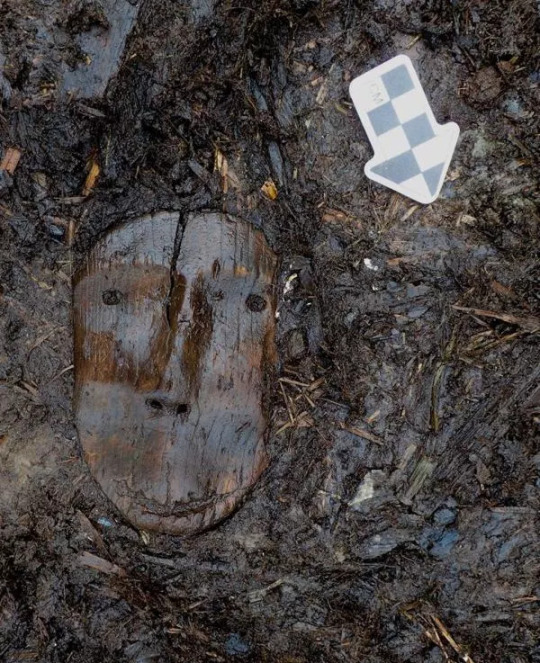
This small mask was found on a side room house floor. We think that this floor may be among the first deposited within this year’s excavation block. This year we have more than doubled the combined total of the masks recovered during the previous six field seasons.
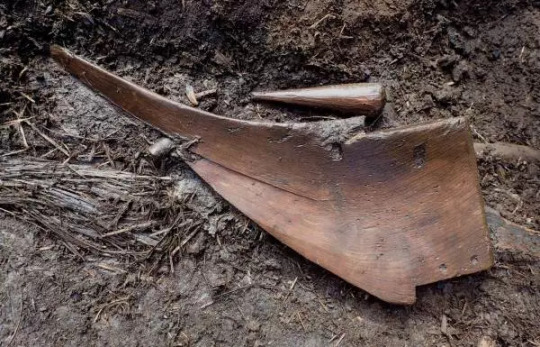
Here is a complete kayak bow piece. It was found in the corner of the house and had been used as a gaming dart target. One gaming dart, complete with bone point was found next to it.
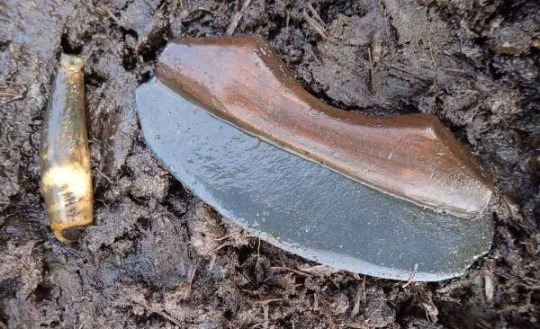
A hafted ground slate uluaq and a pendant made from a beluga tooth.
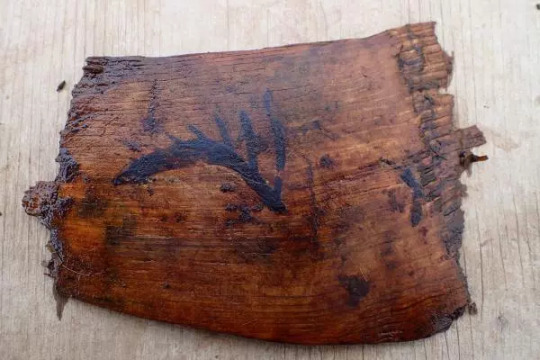
A fragment of what appears to be a bentwood visor, with a portion of the original surface painting still intact. Like many pieces from this level, the wood is still bright.
231 notes
·
View notes
Text
The First Jedi
(aka I wrote 2000 words about how the Jedi culture might have been established because I know nothing about the EU and the canon idea was kinda dumb)
The first Jedi were not Jedi.
They had no name for themselves, or what they would go on to make. That was only natural. No one sets out to make a religion, a culture. The first Jedi were force sensitives born into a galaxy where every system, every planet was its own. There was no Empire, no Republic, but endless factions of endless groups. In some of these factions force sensitives were treasured, revered, sometimes worshipped. But in most, they were feared and where they were feared they were persecuted. Those that could fled from their hostile homes, out into the galaxy.
It is uncertain how these force sensitive refugees found each other. Perhaps they were all drawn to the same place that felt safe in the Force. Perhaps they were drawn to each other, flocking to each other like roosting birds. Perhaps it was just the will of the Force. In any case, a small band of exiled force users found a fair green planet far from other civilizations, so bright and gleaming in the force it drew them in like moths to light.
They set down roots and made what would would eventually become the Jedi.
They found a secluded valley and built their homes close to a clear river. The handful of exiles could at first only manage small homes of stone walls with no mortar. They could only forage for what little food they could find, and hunt sparse beasts for meat and skins.
With the small settlement they had made the Force around their new home became a faint beacon for others like them and the more that arrived the stronger the beacon became. Soon they had a hamlet town and enough hands to farm properly.
As with other tasks they had done these new farmers used the force to help them and they made discoveries. An aspect of the force could be called upon, channeled through the farmer to seeds that when planted grew unnaturally big and robust. This aspect would feed them, and give them life, it was an aspect that gave and gave and nourished like rainwater and sunlight and every new force user who came to them was taught this.
They found also, another aspect, when channeled through a person it would make them far stronger, when given to a plant it would grow faster, but soon after the power was granted it left and when it left it would take with it power twicefold. The plants grown with this aspect withered and caused plants near it to die as well, the people who used it would be strong for a time but would soon wither too, becoming haggard and starving for something they could not name. They knew this aspect as entropy, as a devouring force who’s gifts came with a terrible price and every new force user who came to them was taught this.
These force users knew the Light that Gives, and the Dark that Takes and passed on that knowledge and it was this knowledge that would become the jedi religion, though they would not call it that for centuries.
When the harvest came they had a bounty most of them had never before known. They had mostly grains, because it was easy to grow and easier to eat. They had so much grain after their harvest they needed new storage buildings, and so force-weilding masons and buliders built grain stores. They had so much grain that they joyfully turned a portion into a hearty dark brew, and the people of this small farming village loved it so much the masons and builders made a Great Hall where they might eat and drink and enjoy the company of their friends.
The river they settled beside flooded regularly in the spring, bringing new soil and so next season they planted a greater variety of crops and the harvest was even more plentiful. Soon not only could they spare time and energy growing fastidious spices and herbs but also enough people had settled that not everyone had to farm.
With their bounties they could support the masons that built their homes, the seamstresses who’s force use was so dexterous they could weave cloths that shone with otherworldly light, brewsters who could brew ale that would delight even force users, animal tamers who tamed and domesticated new livestock, delvers who mined nearby mountains for ore for the metalworkers, and the craftsmen among them grew in numbers yearly.
A strange place was found not far from the growing village where the Light that Gave was strong in the force, it was a well spring close to the mountain. At all hours of the day people would go and bask in the force’s light which would sooth anything from sore feet to an aching heart. It was popular enough that some walls and a roof were built to keep the weather out as people rested and rejuvenated there. And so the first temple was made, though it would not be called that for centuries.
More exiled force users came to them every year, their numbers swelled, and they were prosperous. Cautiously they went out into the galaxy to trade some textiles and spices for new ores or new seeds. They carried false maps and false manifestos so no one could trace these nervous exiled people to their hard wrought home. Sometimes, while out in the galaxy, they would hear a cry in the force and follow it into the wilderness where they might come across force sensitive babes abandoned and left to die. They would take these children back to their home where they were loved and cared for. Many of their people were found this way but despite their abandonment they would come to grow up in prosperity.
But where ever there is prosperity there are those who wish to take it. Unbeknownst to the peaceful farmers of the Force, in another corner of the galaxy another group of force users had grown. This group had established themselves in a hotly contested part of the galaxy, wars were never ending, battles raged for years, planet seiges lasted generations. The force users here found the power to protect their home, found the power to beat back the hordes, this terrible power would devour them from the inside out but their short lives were marked by glory. The power they invited into their own soul drove them to seek greater and greater power, mostly it lead to unending infighting but some could sense another power in the galaxy perhaps as great as their own. And they sought it out.
It is unknown how they found the hidden home of the first jedi but when they found it they pillaged, plundered, and looted the farming village. The inhabitants managed to escape capture by fleeing to the mines of the mountain, and the raiders were easily bored by the lack of conflict and conquer. They would leave, but would return when the hunger within them grew to great to ignore the planet so bright in the force.
When the raiders left the first jedi built thicker walls. When the raiders returned the jedi built tower battlements and armed themselves with force forged swords that glowed when danger approached. When the raiders returned the jedi built bunkers in the mountain mines. When the raiders returned again the jedi carved runes of power onto their walls and doors and settlement gates all to keep out ill intent. And on and on it went. Until the first jedi had what could be called a castle protecting what was once a small town and farms. The mines had been expanded into a fort unlike any other, massive halls had been excavated to house all their people at a moments notice and filled with lamps made of strange gleaming gems that exuded the Light that Gives, to keep out any who are enthralled by the Dark that Eats. Knights with crested helms and bright swords protected the farmers, crafters, and builders. These Knights took an oath to protect their home and all people who lived in it.
The raiders were more powerful than the first jedi but the jedi were more enduring than the first of the sith, more organized and more inclined to work together. The sith lived on borrowed time as the Dark ate them from within, those who were fully consumed might live very long but as a horrible wraith creature not even other sith wanted anything to do with.
The jedi dug in, well-rooted in their valley home, and threw back every attack by those who would consume them.
Unable to conquer these people the sith turned their unending appetites on each other and devolved into infighting.
The jedi were then unwearied. Their farms were prosperous, their homes were well built, and their new mountain halls were home to great feasts and festivals. Artists adorned their walls in murals and minstrels sang in their echoing halls.
It may be the halls echo still, with those songs. It may be that the walls are still gloriously painted. But we cannot know, for the seat of the first jedi has been lost, not by destruction but by the wards and runes they had carved into the stones while building it. In their effort to hide their home from the first sith the first jedi wove the force as a shield to hide their valley even after the jedi outgrew their first home. The first seat of the jedi may very well still be out there, still protected, still hidden from the sith and other evils. Long may it be so.
#star wars#jedi#sith#star wars meta#this probably conflicts with so much canon#but i dont caaaare#its interesting to me how cultures reflect the environment they are built in#thus a farming society would value light and life and growth#and a warlike society would value power and glory and admirable death#so yeah the sith are like Mad Max Warboys and the jedi are like Furiosa's Mothers
1 note
·
View note
Text
menu content begins
DONATE
News
Arts & Entertainment
Food
FOLLOW US
ADVERTISING
CONTACT US
NEWSLETTER
RSS FEED
STAFF
Search this siteSEARCHSEND A STORY IDEA
VIEW ALL BRANDS
© 2020 NEW YORK PUBLIC RADIO. ALL RIGHTS RESERVED.
TERMS OF USEPRIVACY POLICY
menu content ends
Menu
DONATE
NEWS
Inside The Lost Jehovah's Witnesses Tunnels Under Brooklyn Heights
BY JEN CARLSON AND JAKE OFFENHARTZ
MAY 22, 2019 9:57 A.M.
• 101 COMMENTS • 13 PHOTOS

GOTHAMIST
Inside the tunnels. (Photo by Mark O'Donnell)
VIEW ALL13
When the Jehovah's Witnesses moved out of Brooklyn Heights over the past few years, cashing in on their now-valuable properties and moving upstate, they left behind a collection of buildings that had been their headquarters for over a century. In the decades after 1909, when Jehovah's Witnesses founder Charles Taze Russell led the religious group from Pennsylvania to "America’s First Suburb," the Witnesses assembled a series of properties that ranged from an old carriage house on Willow Street to five-story brownstones and the expansive Kingdom Hall on Columbia Heights, along with other buildings (some of which would serve as their headquarters and printing plant).
Thousands of Witnesses from across the country came to volunteer at this center, which they called “Bethel," after "Beecher's Bethel," the former home of abolitionist preacher Henry Ward Beecher that was part of the property.
Out of sight of most New Yorkers, though, was the development underground: a series of tunnels that ran beneath the streets to connect a number of the JW properties. And though the tunnels began to be filled in two years ago, their fascinating history has recently begun to come to light.
In 2017, Gothamist filed a FOIL request with the Department of Transportation to find out more about these subterranean passageways. This year, we received hundreds of pages of emails between the Witness leadership and the DOT, along with additional city records from the Municipal Archives. Those documents, along with conversations with several former Jehovah’s Witnesses and videos we were shown, offer a rare inside look at the tunnels, and provide insight into their purpose.

The first tunnel was built by the Squibb family around 1924. (Municipal Archives)
The first tunnel on the property was constructed in the 1920s by Squibb & Sons, who got approval from the Tammany-controlled board of estimate. The pharmaceutical giant sold the property at 25 Columbia Heights to the Witnesses in the 1960s, and this would become their Watchtower headquarters building. At some point, likely shortly after the sale, four more tunnels were excavated, which eventually housed offices, a grocery store, laundromats, and other services.
The four tunnels connected:
97 Columbia Heights to 107 Columbia Heights
107 Columbia Heights to 124 Columbia Heights
124 Columbia Heights to 119 Columbia Heights
86 Willow Street to 77-79 Willow Street (a.k.a. 21 Clark Street)

The decommissioned tunnels are highlighted in this blueprint Gothamist received from the Dept. of Transportation. (Gothamist)
"It was a little creepy" in the tunnels, Gregory Hall, a former JW who left the religion a couple of years ago, told Gothamist. He lived in Brooklyn Heights from 1989 through 1994, though he was a Witness for much longer than that. Like many, he had long yearned to move to the central office at Bethel.
"I've heard of some real strange things that happened down there" in the tunnels, Hall said, without going into detail. He did recall seeing "chain-link cages that they had their offices in. It felt weird. It was not real comfortable."
Since the tunnels were largely secluded, some elders reportedly saw them as an opportunity to corner members away from the rest of the community. Once, Hall said, an older JW man took him into the tunnels, then started talking to him about masturbation. (In a recently released video entitled "Pillowgate," two JW leaders are shown inveighing against masturbation; Hall said the Witnesses are infuriated about the video and are searching for a mole they believe leaked it.)
"[I thought] 'I don't even know you, I feel creepy down here, and you're bringing that up to me?'" Hall recalled. "When those doors closed down in those areas, I didn't feel comfortable. Some of those guys, they lose touch with reality."
The tunnels did serve a number of purposes, Hall said, including "privacy, security," and an easy way to navigate through buildings. "You have housekeepers transporting laundry, cooks that are transporting food. [And] it's protection so you don't have to face the outside people."
But Hall, who says he earned $3 a day (lodging was free) working in the Watchtower printing plant producing JW materials and bibles, also mentions other, more questionable uses: "They would have the elderly down there, sitting in the hallways, outside of these laundromats, straightening out hangers. These guys could barely walk or talk, and the tours [of visiting Witnesses] would come by. It was an avenue for them to be able to display their elderly, and their faithful service, supposedly."
Mark O'Donnell, another former JW who helped inform the recent Atlantic piece on child abuse within the organization, shared the above video (filmed by another JW) with Gothamist which shows a small portion of the tunnels where the commissary was housed.
O'Donnell told Gothamist that he believes the tunnels were likely helpful in not imposing upon the neighborhood too much (though it's worth noting the JW's did have stands on nearby sidewalks where they preached and passed out propaganda to passersby). "At the time there were well over 4,000 Witnesses who lived on the property," he noted. "Any time something came on the market in Brooklyn that they felt they could use, they’d go ahead and buy it. The Brooklyn Heights residents didn’t really want JWs buying all that property for a few reasons. Partially because it took it off the tax register, and it’s a little bit scary when a large religious organization starts buying everything up like that."

Bet you wish you built tunnels, sinners! (Watchtower)
Former JW (and contributor to Gothamist) Amber Scorah, whose book Leaving The Witness is out this June, told Gothamist, "I think that a lot of the reason thousands of young Jehovah’s Witnesses (most of whom were men) volunteered to work for [almost] no pay at Bethel was because it meant you got to live in New York City." She also noted that it was "definitely frowned upon for Witnesses who worked [there] to go out and interact with the world, except for reasons of preaching."
Scorah says meals were taken in cafeterias, and as this video from the 1990s shows, those meals were likely prepared in underground kitchens.
You'll enter the tunnels around the 7 minute mark.
"There's a theory that [the tunnels were built because] they didn’t want to be visible to the neighborhood," O'Donnell told Gothamist. "I do think it’s accurate. They had upwards of 4,000 individuals, and they were swarming like ants all over the place." However, it's worth noting that there are also tunnels at the Witnesses' Watchtower Farms property in Wallkill, NY, which is much more secluded. Hall also believes there are tunnels at their Tuxedo Park, NY property.
According to emails obtained by Gothamist, the official use of the tunnels as described to the Department of Transportation (from whom the Jehovah's Witnesses leased tunnel sites beneath public roadways) was for a "pedestrian passageway and to transport supplies." The original tunnel built by the Squibbs ran beneath Vine Street, between two of the buildings in what would become the multi-building Watchtower headquarters. During the ensuing decades, the JW’s would come to control four additional tunnels connecting six different properties, stretching from Columbia Heights, which runs along the top of the Brooklyn Heights Promenade, to buildings on Orange, Pineapple, and Clark Streets. In 2016, the Jehovah’s Witnesses paid the city roughly $80,000 in total rent for the tunnels.
Throughout 2016, as the Jehovah’s Witnesses were unloading their Brooklyn Heights real estate, the group was unsure about what to do with their subterranean assets. After initially planning to leave them in place, Watchtower architect David Bean informed the DOT in early 2017 that the religious organization would be “moving ahead 100% with filling” the tunnels. That decision was reached following discussions with prospective buyers, according to Bean's emails.
But navigating the city’s tunnel-filling bureaucracy is apparently a challenging endeavor, and emails show the JW engineering coordinator growing increasingly frustrated by the speed at which the DOT was approving their plans. “I’m getting quite a bit of pressure from my construction manager and owner here at Watchtower,” Bean wrote to the DOT in February of 2017. “We’re due to be completely out of the buildings in a couple months, which doesn’t leave us much time for mobilization on the project.”

One of the bills from the Dept. of Transportation. (Gothamist)
In October of 2017, following a delay in the city’s confirmation that a tunnel had been filled, Bean pressed again: “This is becoming rather critical since it’s linked to the sale of the adjacent 15 story building at 21 Clark Street.” The DOT rep quickly confirmed the deactivation. A few weeks later, the Jehovah’s Witnesses closed on a $200 million sale of that building to the private equity firm Kayne Anderson Real Estate Advisors, which plans to turn the property into “luxury senior housing.”
Emails between the DOT and the Jehovah’s Witnesses also shed light on how, exactly, one closes a network of semi-secret tunnels. The plan, painstakingly negotiated between the DOT and the religious group, called for the tunnels to be hydraulically filled with sand and sealed with either a steel barrier or concrete wall, depending on the potential for corrosion. Determining the load-bearing capacity of the soil beneath the tunnels also prompted several exchanges between the city and the group’s engineers, as did the matter of pouring concrete into the tunnels without disturbing the roadway or sidewalk above.
In the end, the group resolved to fill some of the tunnels via a double-door metal hatchway on the sidewalk of Columbia Heights—an entry point that “has been in place for many years, and will remain as such after the tunnel filling is completed,” Bean wrote—while using a basement access point for the remaining passageways. Openings were left at the ends of each tunnel for a visual inspection, and cameras were installed to monitor the progress of the pouring.
Four of the tunnels have been filled, according to the documents Gothamist obtained: those connecting 97 Columbia Heights to 107 Columbia Heights, 107 Columbia Heights to 124 Columbia Heights, 124 Columbia Heights to 119 Columbia Heights, and 86 Willow Street to 77-79 Willow Street (a.k.a. 21 Clark Street). (The current status of the Squibb tunnel is unknown.) Per a 1988 contract, upon selling the properties the Witnesses also had to pay for the reconstruction of a sewer line under Orange Street, which had to be removed when that tunnel was built.
We reached out to that Watchtower architect, David Bean, for a little more information about the passageways—specifically how and when they were built—but Bean told us he needed clearance from the JW's Office of Public Information. That office has declined to comment (and presumably, is not allowing Bean to answer our questions). And so, as with most stories about underground complexes, these tunnels still have a little bit of mystery buried with them.
This video, said to be filmed in the 1960s, also shows the tunnels (around the 3:15 mark).
#BROOKLYN HEIGHTS #JEHOVAH'S WITNESSES#TUNNELS #ORIGINAL
Do you know the scoop? Commentbelow or Send us a Tip
Recent in News

Extra Extra: You Deserve To Watch This Puppy Cam
BEN YAKAS 27

Coronavirus Updates: De Blasio Says City Will Run Out Of Ventilators On Sunday
ELIZABETH KIM 298

Bronx Man Allegedly Attempted Suicide-By-Cop Because He Has Coronavirus
BEN YAKAS 26
Featured in News

Interactive Map: Coronavirus Cases In NYC By Zip Code
The NYC Department of Health has released a data set showing the raw number of positive COVID-19 tests for each zip code. We've mapped the zip codes by total positive cases.
JAKE DOBKIN 101
READ MORE IN:
News
Arts & Entertainment
Food
BACK TO TOP
SEND US A STORY IDEA
FOLLOW US
Gothamist is a website about New York City news, arts and events, and food, brought to you by New York Public Radio.
Support for Gothamist is provided by Craig Newmark Philanthropies.
ADVERTISING
0 notes
Text
menu content begins
DONATE
News
Arts & Entertainment
Food
FOLLOW US
ADVERTISING
CONTACT US
NEWSLETTER
RSS FEED
STAFF
Search this siteSEARCHSEND A STORY IDEA
VIEW ALL BRANDS
© 2020 NEW YORK PUBLIC RADIO. ALL RIGHTS RESERVED.
TERMS OF USEPRIVACY POLICY
menu content ends
Menu
DONATE
NEWS
Inside The Lost Jehovah's Witnesses Tunnels Under Brooklyn Heights
BY JEN CARLSON AND JAKE OFFENHARTZ
MAY 22, 2019 9:57 A.M.
• 101 COMMENTS • 13 PHOTOS

GOTHAMIST
Inside the tunnels. (Photo by Mark O'Donnell)
VIEW ALL13
When the Jehovah's Witnesses moved out of Brooklyn Heights over the past few years, cashing in on their now-valuable properties and moving upstate, they left behind a collection of buildings that had been their headquarters for over a century. In the decades after 1909, when Jehovah's Witnesses founder Charles Taze Russell led the religious group from Pennsylvania to "America’s First Suburb," the Witnesses assembled a series of properties that ranged from an old carriage house on Willow Street to five-story brownstones and the expansive Kingdom Hall on Columbia Heights, along with other buildings (some of which would serve as their headquarters and printing plant).
Thousands of Witnesses from across the country came to volunteer at this center, which they called “Bethel," after "Beecher's Bethel," the former home of abolitionist preacher Henry Ward Beecher that was part of the property.
Out of sight of most New Yorkers, though, was the development underground: a series of tunnels that ran beneath the streets to connect a number of the JW properties. And though the tunnels began to be filled in two years ago, their fascinating history has recently begun to come to light.
In 2017, Gothamist filed a FOIL request with the Department of Transportation to find out more about these subterranean passageways. This year, we received hundreds of pages of emails between the Witness leadership and the DOT, along with additional city records from the Municipal Archives. Those documents, along with conversations with several former Jehovah’s Witnesses and videos we were shown, offer a rare inside look at the tunnels, and provide insight into their purpose.

The first tunnel was built by the Squibb family around 1924. (Municipal Archives)
The first tunnel on the property was constructed in the 1920s by Squibb & Sons, who got approval from the Tammany-controlled board of estimate. The pharmaceutical giant sold the property at 25 Columbia Heights to the Witnesses in the 1960s, and this would become their Watchtower headquarters building. At some point, likely shortly after the sale, four more tunnels were excavated, which eventually housed offices, a grocery store, laundromats, and other services.
The four tunnels connected:
97 Columbia Heights to 107 Columbia Heights
107 Columbia Heights to 124 Columbia Heights
124 Columbia Heights to 119 Columbia Heights
86 Willow Street to 77-79 Willow Street (a.k.a. 21 Clark Street)

The decommissioned tunnels are highlighted in this blueprint Gothamist received from the Dept. of Transportation. (Gothamist)
"It was a little creepy" in the tunnels, Gregory Hall, a former JW who left the religion a couple of years ago, told Gothamist. He lived in Brooklyn Heights from 1989 through 1994, though he was a Witness for much longer than that. Like many, he had long yearned to move to the central office at Bethel.
"I've heard of some real strange things that happened down there" in the tunnels, Hall said, without going into detail. He did recall seeing "chain-link cages that they had their offices in. It felt weird. It was not real comfortable."
Since the tunnels were largely secluded, some elders reportedly saw them as an opportunity to corner members away from the rest of the community. Once, Hall said, an older JW man took him into the tunnels, then started talking to him about masturbation. (In a recently released video entitled "Pillowgate," two JW leaders are shown inveighing against masturbation; Hall said the Witnesses are infuriated about the video and are searching for a mole they believe leaked it.)
"[I thought] 'I don't even know you, I feel creepy down here, and you're bringing that up to me?'" Hall recalled. "When those doors closed down in those areas, I didn't feel comfortable. Some of those guys, they lose touch with reality."
The tunnels did serve a number of purposes, Hall said, including "privacy, security," and an easy way to navigate through buildings. "You have housekeepers transporting laundry, cooks that are transporting food. [And] it's protection so you don't have to face the outside people."
But Hall, who says he earned $3 a day (lodging was free) working in the Watchtower printing plant producing JW materials and bibles, also mentions other, more questionable uses: "They would have the elderly down there, sitting in the hallways, outside of these laundromats, straightening out hangers. These guys could barely walk or talk, and the tours [of visiting Witnesses] would come by. It was an avenue for them to be able to display their elderly, and their faithful service, supposedly."
Mark O'Donnell, another former JW who helped inform the recent Atlantic piece on child abuse within the organization, shared the above video (filmed by another JW) with Gothamist which shows a small portion of the tunnels where the commissary was housed.
O'Donnell told Gothamist that he believes the tunnels were likely helpful in not imposing upon the neighborhood too much (though it's worth noting the JW's did have stands on nearby sidewalks where they preached and passed out propaganda to passersby). "At the time there were well over 4,000 Witnesses who lived on the property," he noted. "Any time something came on the market in Brooklyn that they felt they could use, they’d go ahead and buy it. The Brooklyn Heights residents didn’t really want JWs buying all that property for a few reasons. Partially because it took it off the tax register, and it’s a little bit scary when a large religious organization starts buying everything up like that."

Bet you wish you built tunnels, sinners! (Watchtower)
Former JW (and contributor to Gothamist) Amber Scorah, whose book Leaving The Witness is out this June, told Gothamist, "I think that a lot of the reason thousands of young Jehovah’s Witnesses (most of whom were men) volunteered to work for [almost] no pay at Bethel was because it meant you got to live in New York City." She also noted that it was "definitely frowned upon for Witnesses who worked [there] to go out and interact with the world, except for reasons of preaching."
Scorah says meals were taken in cafeterias, and as this video from the 1990s shows, those meals were likely prepared in underground kitchens.
You'll enter the tunnels around the 7 minute mark.
"There's a theory that [the tunnels were built because] they didn’t want to be visible to the neighborhood," O'Donnell told Gothamist. "I do think it’s accurate. They had upwards of 4,000 individuals, and they were swarming like ants all over the place." However, it's worth noting that there are also tunnels at the Witnesses' Watchtower Farms property in Wallkill, NY, which is much more secluded. Hall also believes there are tunnels at their Tuxedo Park, NY property.
According to emails obtained by Gothamist, the official use of the tunnels as described to the Department of Transportation (from whom the Jehovah's Witnesses leased tunnel sites beneath public roadways) was for a "pedestrian passageway and to transport supplies." The original tunnel built by the Squibbs ran beneath Vine Street, between two of the buildings in what would become the multi-building Watchtower headquarters. During the ensuing decades, the JW’s would come to control four additional tunnels connecting six different properties, stretching from Columbia Heights, which runs along the top of the Brooklyn Heights Promenade, to buildings on Orange, Pineapple, and Clark Streets. In 2016, the Jehovah’s Witnesses paid the city roughly $80,000 in total rent for the tunnels.
Throughout 2016, as the Jehovah’s Witnesses were unloading their Brooklyn Heights real estate, the group was unsure about what to do with their subterranean assets. After initially planning to leave them in place, Watchtower architect David Bean informed the DOT in early 2017 that the religious organization would be “moving ahead 100% with filling” the tunnels. That decision was reached following discussions with prospective buyers, according to Bean's emails.
But navigating the city’s tunnel-filling bureaucracy is apparently a challenging endeavor, and emails show the JW engineering coordinator growing increasingly frustrated by the speed at which the DOT was approving their plans. “I’m getting quite a bit of pressure from my construction manager and owner here at Watchtower,” Bean wrote to the DOT in February of 2017. “We’re due to be completely out of the buildings in a couple months, which doesn’t leave us much time for mobilization on the project.”

One of the bills from the Dept. of Transportation. (Gothamist)
In October of 2017, following a delay in the city’s confirmation that a tunnel had been filled, Bean pressed again: “This is becoming rather critical since it’s linked to the sale of the adjacent 15 story building at 21 Clark Street.” The DOT rep quickly confirmed the deactivation. A few weeks later, the Jehovah’s Witnesses closed on a $200 million sale of that building to the private equity firm Kayne Anderson Real Estate Advisors, which plans to turn the property into “luxury senior housing.”
Emails between the DOT and the Jehovah’s Witnesses also shed light on how, exactly, one closes a network of semi-secret tunnels. The plan, painstakingly negotiated between the DOT and the religious group, called for the tunnels to be hydraulically filled with sand and sealed with either a steel barrier or concrete wall, depending on the potential for corrosion. Determining the load-bearing capacity of the soil beneath the tunnels also prompted several exchanges between the city and the group’s engineers, as did the matter of pouring concrete into the tunnels without disturbing the roadway or sidewalk above.
In the end, the group resolved to fill some of the tunnels via a double-door metal hatchway on the sidewalk of Columbia Heights—an entry point that “has been in place for many years, and will remain as such after the tunnel filling is completed,” Bean wrote—while using a basement access point for the remaining passageways. Openings were left at the ends of each tunnel for a visual inspection, and cameras were installed to monitor the progress of the pouring.
Four of the tunnels have been filled, according to the documents Gothamist obtained: those connecting 97 Columbia Heights to 107 Columbia Heights, 107 Columbia Heights to 124 Columbia Heights, 124 Columbia Heights to 119 Columbia Heights, and 86 Willow Street to 77-79 Willow Street (a.k.a. 21 Clark Street). (The current status of the Squibb tunnel is unknown.) Per a 1988 contract, upon selling the properties the Witnesses also had to pay for the reconstruction of a sewer line under Orange Street, which had to be removed when that tunnel was built.
We reached out to that Watchtower architect, David Bean, for a little more information about the passageways—specifically how and when they were built—but Bean told us he needed clearance from the JW's Office of Public Information. That office has declined to comment (and presumably, is not allowing Bean to answer our questions). And so, as with most stories about underground complexes, these tunnels still have a little bit of mystery buried with them.
This video, said to be filmed in the 1960s, also shows the tunnels (around the 3:15 mark).
#BROOKLYN HEIGHTS #JEHOVAH'S WITNESSES#TUNNELS #ORIGINAL
Do you know the scoop? Commentbelow or Send us a Tip
Recent in News

Extra Extra: You Deserve To Watch This Puppy Cam
BEN YAKAS 27

Coronavirus Updates: De Blasio Says City Will Run Out Of Ventilators On Sunday
ELIZABETH KIM 298

Bronx Man Allegedly Attempted Suicide-By-Cop Because He Has Coronavirus
BEN YAKAS 26
Featured in News

Interactive Map: Coronavirus Cases In NYC By Zip Code
The NYC Department of Health has released a data set showing the raw number of positive COVID-19 tests for each zip code. We've mapped the zip codes by total positive cases.
JAKE DOBKIN 101
READ MORE IN:
News
Arts & Entertainment
Food
BACK TO TOP
SEND US A STORY IDEA
FOLLOW US
Gothamist is a website about New York City news, arts and events, and food, brought to you by New York Public Radio.
Support for Gothamist is provided by Craig Newmark Philanthropies.
ADVERTISING
0 notes
Text
5 secret Cycladic islands to visit by private yacht charter
The names Mykonos and Santorini resonate with everyone when hearing the words “Greek Cycladic Islands”; however, these are only two of many islands in the lovely Cyclades Islands. On private yacht charter, you decide where to cruise, and each and every island to visit, so ask your crew to steer towards these 5 secret Cycladic Islands, that few ever visit when next you cruise through the Cycladic islands on a Greek yacht charter. Here traditional is the norm, where the local men play backgammon in the shade of the plane trees and relax with ouzo and octopus in the evening. Where in the Chora, children play in the main plaza, and everyone knows all of the local cats, each of which belongs somewhere, although it appears as though they belong to no one. Where blooming bougainvillea grows wild over whitewashed buildings trimmed in various shades of blue, and octopi are strung up outside the local tavernas on lines to dry.
This is the everyday Cycladic Greek island lifestyle of yesteryear still flourishing on these lesser known islands, most of which do not have an airport that are truly most easily visited by private yacht charter, at least if visiting on your own schedule when you want to visit. Cruise into each local harbor and relax into the island lifestyle, each island with a different feel, on a Greek yacht charter, on your own time, at your own pace.
Sikinos
This is the Island of Festivals. Tucked away down in the southeast corner of the Cycladic Islands, Sikinos is a tiny island that still adheres to celebrating traditional festivals, especially religious festivals. The residents enjoy every celebration to its fullest with music, folklore dances, food, and wine and love to include all visitors in every celebration.
If planning to visit by yacht charter, the most important religious events include Zoodohou Pigi, the feast day of the Chrysopigi monastery on May 2, Aghios Panteleimonas on July 27, the Holy Transfiguration on August 6, the Festival for the Dormition of the Virgin Mary on August 15, and the Exaltation of the Holy Cross on September 14. Each religious festival has different traditions; however, each religious festival starts with a church service, a great feast, and after food and drink, starts music and dance which can go on until the wee hours of the morning. During the festivities, the island echoes with the sounds of the violin, lute, and bagpipes. The islanders are very particular about each and every festival with careful preparations made in advance. Traditional dishes are prepared for each great feast, and houses are freshly whitewashed and decorated.
There is also a non-religious Sikinos Summer Festival which is the most popular festival on Sikinos. This is a grand festival taking place in August which lasts for about two weeks. All islanders and visitors are welcome to join in. There are many events daily, including concerts, art exhibitions, and dancing. On a private yacht charter, where the itinerary is yours to make, the route can easily be organized to hit at least one of these festivals. Include Sikinos in a crewed yacht charter for the once in a lifetime experience to eat, drink and dance celebrating a traditional Cycladic festival with the islanders. And remember, this is not just dancing, this is Greek dancing at its traditional best.
Amorgos
Close by Sikinos is Amorgos Island, also a tiny little island, and the furthest east of the Cycladic Islands. Probably the most iconic and easily identified part of this island is the fantastic Monastery of Chozoviotissa painted white, built into and clinging to the side of a cliff on the other side of the island from the main port. This is what identifies and sets this island apart from the rest of the Cycladic Islands, and lets any visitor know at once on approach by sea, that yes, one has reached Amorgos Island.
Inhabited since the Early Cycladic Era, which has been evidenced by archaeological finds on the island, Amorgos has a long cultural history and tradition. This is an island where one steps off the beaten track to visit an island by yacht charter that has preserved its traditional feel; where the locals welcome you with a smile on their face and perhaps a shot of the local raki based liquor steeped in aromatic herbs. Once on shore, walk across this island on the many trails and walking paths through a countryside redolent with wild herbs. One trail or another will end up at one of the many beaches around the coastline of this lovely island.
The monastery has eight floors connected by narrow stone staircases carved into the rock with an interior that is like a labyrinth. Be sure to make it to the top balcony of the monastery for a stunning view. The cells of the monks are also all carved into the rock. Two icons of the Virgin Mary and other religious relics from the period of Alexios Komninos are all housed at the monastery. The ground floor has a worthwhile ecclesiastical museum.
The main town of Amorgos, the Chora, is, to be safe from pirates, located in the center of the island, is a genuinely Cycladic village and one of Greece’s most striking and picturesque island capitals. It is full of charming alleys, water fountains, traditional Cycladic houses with bougainvillea trees in court yards and many churches. This is a little village full of walking streets, a 13th century castle, and monasteries. And another island without an airport that just by asking your Captain to set a particular course you can visit and explore, where it could very well be just you and the locals.
Milos
Wealthy in ancient times, due to the huge amount of volcanic razor sharp obsidian found on the island that was coveted for knifes for everyday use and weaponry, Milos had a very healthy trade in implements made with obsidian. Today visit the island for the archeological sites and the history, however also because of the beautiful beaches, the caves washed into the soft rock cliffs, and the quietly trendy nightlife.
Besides the ancient history of obsidian trade, Milos was also an early Christian island, and Christian Catacombs have been found and excavated. While only a small portion of the catacombs has been unearthed today, one can visit and gain a feel for the Christian world in Ancient Times.
Like other Greek Islands, Milos has many beautiful beaches, over 70 in fact to enjoy for sunning. The most famous beach is Sarakiniko, with a moonscape landscape filled with white rocks. Other amazing Milos beaches are Tsigrado, Paleochori, Agia Kyriaki and Firiplaka. It is the huge number of caves however that sets Milos apart from other of the Cycladic Islands. The most important of these caves are Papafrangas, Sykia, and Kleftiko. These caves are great to explore for swimming and snorkeling as the colors of the waters inside the caves are unique and beautiful.
Antiparos and Despotiko
Just off of the much larger Cycladic Island of Paros, Antiparos and Despotiko were once believed to be connected as one larger island and in Ancient Times were a maritime crossroads where visitors and goods came from mainland Greece, other Aegean islands, the Ionian Islands and Rhodes, Cyprus and Egypt. Today, they are two separate islands sitting side by side. Despotiko is uninhabited with just extensive ruins of what is believed to have been a Sanctuary to Apollo, originally built by the Parians from Paros out of famous Parian marble, which may have been a larger and more important Sanctuary than the Sanctuary to Apollo on Delos Island. Antiparos has a small little settlement with tiny little walking streets and a large cave with amazing stalactites and stalagmites in all its rooms. There are beautiful beaches and lovely water in all of the anchorages on each island.
The ruins on Despotiko are open air and easy to wander around. There may be archeologists at work as this is an ongoing relaxed archaeological dig, relying on volunteers and donations and may be an archeology site where you can engage the archeologists and volunteers, depending on who might be there for more information on what might be happening.
To date, many artifacts have been found including small personal items such as jewelry, ointment and perfume containers, ceramic objects, agricultural tools, vases, basins, and other household implements such as lamps and amphorae and statues and sculptures. Because of the freedom of being on your own charter yacht, pop over to Antiparos to enjoy the beautiful little anchorages, and explore Despotiko to see an extensive archeological site “in action”. If excavations are ongoing, those digging may even welcome a little help.
Folegandros
With its main Chora high up over 200 meters from the Aegean Sea built in the 1300’s, Folegandros cannot help but charm. The little walking streets and alleyways snake through the Chora with one walking street zig zagging up the hillside outside of Chora to a lone church perched high up on the hillside overlooking the capital village. It is in these less traveled traditional Cycladic Islands where the prettiest towns and villages are found.
In the Chora on Folegandros, 200 meters above the sea, the sunsets are spectacular, and the local tavernas are serving very local traditional foods of fresh octopus, Greek Salad with wonderful local goat’s cheese, stuffed tomatoes and vine leaves, handmade pasta with rabbit sauce, cheese and spinach pies and fresh fish. There are few cars, so here donkeys are still used to carry loads. Peek over walls to see lemon trees in courtyards with their fruit protected from the Meltemi Winds. On the quays, local fishermen can be found untangling their nets and cleaning fish, while the local taverna owners hang octopi out on lines to dry. This is an island where a bucket of fresh sea urchins might show up on a taverna menu, or where the fish of the day might have just been caught. The island is only 8 miles long, with hillsides redolent with wild thyme and oregano. There are few beaches, however on such a small island it takes no time to reach one of the beaches, and there are beautiful anchorages. This is an island where it is impossible to get lost, but easy to get drawn into the daily traditional life on a lovely little island where goods are still delivered by donkey.
With private yacht charter when it is your choice where you cruise, head to Sikinos Island for a festival and late night Greek dancing to violins, lutes and bagpipes in the village plaza, visit the Monastery of Chozoviotissa built into the side of a cliff on Amorgos Island, snorkel the beautiful blue green waters in the caves of Milos Island, maybe lend a hand on the archeological dig on Despotiko Island, and settle in with the locals for ouzo and octopus on Folegandros Island. These are 5 great Cycladic Islands that while less traveled are very rewarding for those that find their way to each harbor.
Missy Johnston is Owner of Northrop-Johnson Yacht Charters Newport. Northrop-Johnson Yacht Charters is a luxury crewed yacht charter company offering top notch private yachts with great crews in every worldwide cruising destination.
If you would like to be a guest blogger on A Luxury Travel Blog in order to raise your profile, please contact us.
The post 5 secret Cycladic islands to visit by private yacht charter appeared first on Tripstations.
from Tripstations https://ift.tt/2Hqle6Q via IFTTT
0 notes
Text
Universal Studios Hollywood News Roundup! Isla Nu Bar, Jurassic World Gates + Bryce, Chris & BD!
Universal Studios Hollywood is getting closer to unveiling the Jurassic World themed area and Jurassic World The Ride in the coming months, but before that happens, we’ve got some decent updates to the progress. We covered all of the details here in Episode 190, featuring The Jurassic Wire. You can listen to that episode and follow along with the content here. So let’s start with the most recent press release from Universal that focuses on the addition of Chris Pratt, Bryce Dallas Howard and BD Wong being added to the attraction:
"Universal City, CA, May 23, 2019 – Stars of the JURASSIC WORLD films Chris Pratt, Bryce Dallas Howard and BD Wong reprise their roles as Owen Grady, Claire Dearing and Dr. Henry Wu, bringing their characters from the silver screen to Universal Studios Hollywood’s much anticipated mega attraction, “Jurassic World—The Ride,” opening this summer. This marks the first time the cast will appear as their iconic characters outside of the JURASSIC WORLD films for a theme park attraction. As part of original content created exclusively for the new ride, Owen, Claire and Dr. Wu will shed light on their interactions with the dinosaurs along with facts and information about the imposing prehistoric creatures that first roamed the earth more than 65 million years ago. This spectacular new ride will feature an original storyline that will take guests on a breathtaking excursion through the theme park as depicted in Universal Pictures and Amblin Entertainment’s film, JURASSIC WORLD. It will soar to new heights with the addition of iconic dinosaurs from the movie, including the colossal Indominus rex and the magnificent aquatic Mosasaurus in her natural habitat. For the first time, JURASSIC WORLD fans will have the chance to see this impressive creature and become immersed within her massive Aquarium Observatory. Appearing to span over 60 feet in length and tipping the scales at over 30K pounds through stunning state-of-the-art visual effects, the Mosasaurus is a sight to behold as she moves just inches away from guests throughout her glass enclosure filled with the equivalent of 3.5 million gallons of water. Universal Creative collaborated with Industrial Light & Magic (ILM) to bring the Mosasaurus to life and to capture the realism of her underwater environment using a combination of spectacular visual effects and cutting-edge technologies, including the use of motion parallax, a technique that shifts the guest’s perspective of the Mosasaurus as she moves throughout the tank. The team also employed a series of lighting enhancements allowing the aquarium to intuitively shift from day to night, as well as visual changes to the environment during inclement weather, thus creating a variety of visual scenarios guests can experience based on when they experience the ride. “Jurassic World—The Ride” captures the essence of the blockbuster movie and comes to life in collaboration with the award-winning and inspired minds at Universal Creative, the Academy Award®-winning special-effects visionaries at Industrial Light & Magic, a division of Lucasfilm, Ltd., Universal Pictures and acclaimed filmmakers Steven Spielberg, Colin Trevorrow and Frank Marshall. When “Jurassic World—The Ride” opens this summer, guests will be welcomed to a dramatically reimagined space reflective of the hit films. A fresh entry statement, stonework landscaping, and a contemporary redesign of the iconic JURASSIC WORLD gates, illuminated with billowing flames, will create the framework for the all new aesthetics. Once guests pass through the queue, they will board specially designed rafts that will navigate the lush environs of dense vegetation and traverse new areas besieged with towering dinosaurs meandering at just an arm’s length away. Encounters with such docile creatures as the Stegosaurus and Parasaurolophus will quickly turn awry as predatory Velociraptors and Dilophosaurus begin to wreak havoc, turning guests from spectators to prey. When the Tyrannosaurus rex begins to battle one of the attraction’s new ferocious dinosaurs, the rafts will spill down a treacherous 84-foot waterfall as the sole means of escape. Located adjacent to the ride will be a new elaborately themed “Raptor Encounter” where Blue, the beloved Velociraptor from the JURASSIC WORLD franchise, will engage guests in daring face-to-face encounters. In addition, a new interactive “Dino Play” area will incorporate educational components within an inspired space where children of all ages can explore and excavate giant dinosaur fossils."
We been speculating on the podcast that the trio of Bryce, Chris and BD would show up in the attraction in some way. The most obvious inclusion would be in the pre-show video, a la John Hammond in the old Jurassic Park: The Ride queue video. I’d expect familiar looking Lab settings with information on the dinosaurs you’ll come to see on the tour, potentially provided by Claire Dearing and since the Indominus Rex is included in the ride, I’d expect Dr. Wu to be relaying information about dinosaur hybrids at some point. Owen Grady seems like a good fit for the safety instruction portion of the video. On the latest episode of The Jurassic Wire, I brought up a point about wanting to see an Owen Grady animatronic in the “Owen pose”, holding off a few raptor animatronics. Pipe dream, I know, but time will tell.
A few other tidbits in the press release that have me excited, such as the parallax feature giving a bit more life to the Mosasaurus viewing experience. Everyone is worried about more screens being added to another attraction, but from everything I’ve heard, they are seemingly adding much more than your typical screen based attraction experience. We’ve heard rumors about a new type of glass being used to enhance the glass cracking as the Mosasaurus begins it’s attack, now the parallax; let’s just hope it sells the realism. I’ve personally been perplexed about the indoor experience of the Mosasaurus encounter, so I’m glad to hear there are effects being used to replicate the atmospheric conditions. It’s something I haven’t seen before in a theme park attraction, transitioning indoors, but still showcasing the same weather you experienced outside. That would certainly help to sell the experience.
Interestingly, we see the new promo image Owen and Claire running away from the Indominus Rex enclosure, which depicts an alternate version of what actually happened in the film. They added Claire, changed up the proportions and added a bit of depth to the shot. So will we see them further in the attraction? Maybe this artwork lends some weight to that theory.
There’s also a chance we can see them running away or spelling danger for the ride-goers via screens in the attraction. That a complete assumption based off the new promo image, but it’s always a possibility. I wonder if either Bryce or Chris would take over for the Richard Kiley audio throughout the ride, or who knows, maybe even an audio cameo from Jimmy Fallon.
Next up, we finally have our first looks at the new Jurassic World gates in the land. The old Jurassic Park gates are long gone and the new concrete, sterile vibe of Jurassic World is here.
Universal tried to carry over the ascetic of the old gates instead of re-create the gates we’ve all seen in the actual Jurassic World film. I’ve seen complaints already in regards to the size of the lettering, the lack of depth and the color of the concrete pillars themselves, but I think thing will blend better once completed with fire effects and all. Of course, the lack of wooden doors will always signal an issue in theming, but they are definitely doing the best they can in a confined area. Hollywood doesn’t have the breadth of land that Orlando has for theming. I do like what I’m seeing so far though for Hollywood.
In the below tweet, we can see they’ve finally added the Jurassic World logo onto the ride building. It’s a wonderful sight to see. The massive logo now sits high above for all to see. This is a complete rebranding and they didn’t hesitate on pushing that branding in your face. Not only did they leave Jurassic Park behind, but they left it in the dust.
We finally get a really good look at the opening scene for Jurassic World The Ride featuring a fossil replica of Jurassic World’s iconic Mosasaurus!
This Mosasaurus fossil replica, along with “When Dinosaurs Ruled The Earth” will be the first thing you see before heading into the Mosasaurus scene. It’s a bit odd that the quote below mentions “dinosaurs” but the fossil is a Mosasaurus, notably not a dinosaur. With that aside, that section of the ride looks very interesting and I can’t wait to see how that blends into the Mosasaurus tank scene.
Next up, we get a decent look at the kids play area, nestled away in the corner.
From the image by @Bioreconstruct, you can see that they are adding on new levels to the”Dino Play” zone in the Jurassic World section. The original play area was fairly small, so it will be nice to have a few more additions for the young ones. Jurassic Park/World is something meant for nearly all ages, so I’m excited to see they haven’t forgotten that.
Next up, is a fun addition to the land. Isla Nu-Bar!
I love the name. It's one of those names we’ve all joked about for years. It’s such an on-the-nose name, but I absolutely love the inclusion of it in the section. With that name, I’d fully expect alcohol to be served there, not just your standard concession stand. I’m happy to see they are embracing the fun of the series and intellect of the super fans. Not only is this a rebranding, but they are embracing the idea that this is Isla Nublar and not just Jurassic World in California.
Lastly, we can see some new merchandise has been floating around the parks.
The merch showing up in time to promote the ride has a interesting flare to it. It’s part Jurassic World and part Fallen Kingdom. You can tell they’ve crossed over the two marketing ideas here with the burning look of the Fallen Kingdom merch and renderings of Blue, along with the identity of Jurassic World merch. I’d be interested in picking up the merch either way.
That about wraps up our coverage of the recent updates to the upcoming Jurassic World section at Universal Studios Hollywood! I am very excited about the change. Yes, it’s always going to be disappointing to see Jurassic Park as a thing of the past, but everything they’ve done to embrace Jurassic World looks amazing. What are you most excited about with these recent updates? Let us know in the comments below.
To see Universal Studios Hollywood’s new marketing campaign, It Just Got Real in support of this summer’s opening of “Jurassic World—The Ride,” click here.
With so much to see and do at Universal Studios Hollywood, the new California Neighbor Pass invites guests to experience 175 days of fun for $149 when purchased online. Visit www.UniversalStudiosHollywood.com for more details. Blackout dates and restrictions apply.
More information is available at www.UniversalStudiosHollywood.com. Like Universal Studios Hollywood on Facebook and follow @UniStudios on Instagram and Twitter.
Written by: Brad Jost
#article#jurassic world universal#jurassic world universal studios hollywood#universal studios jurassic world#universal studios hollywood jurassic world#universal studios jurassic park#jurassic world the ride#it just got real jurassic world#dino play#jurassic world branding#isla nu bar#isla nu-bar#isla nublar bar#jurassic world bar#jurassic world gates#jurassic world logo universal studios#bryce dallas howard jurassic world the ride#chris pratt jurassic world the ride#bd wong jurassic world the ride#owen grady jurassic world the ride#claire dearing jurassic world the ride#dr henry wu jurassic world the ride#brad jost
1 note
·
View note